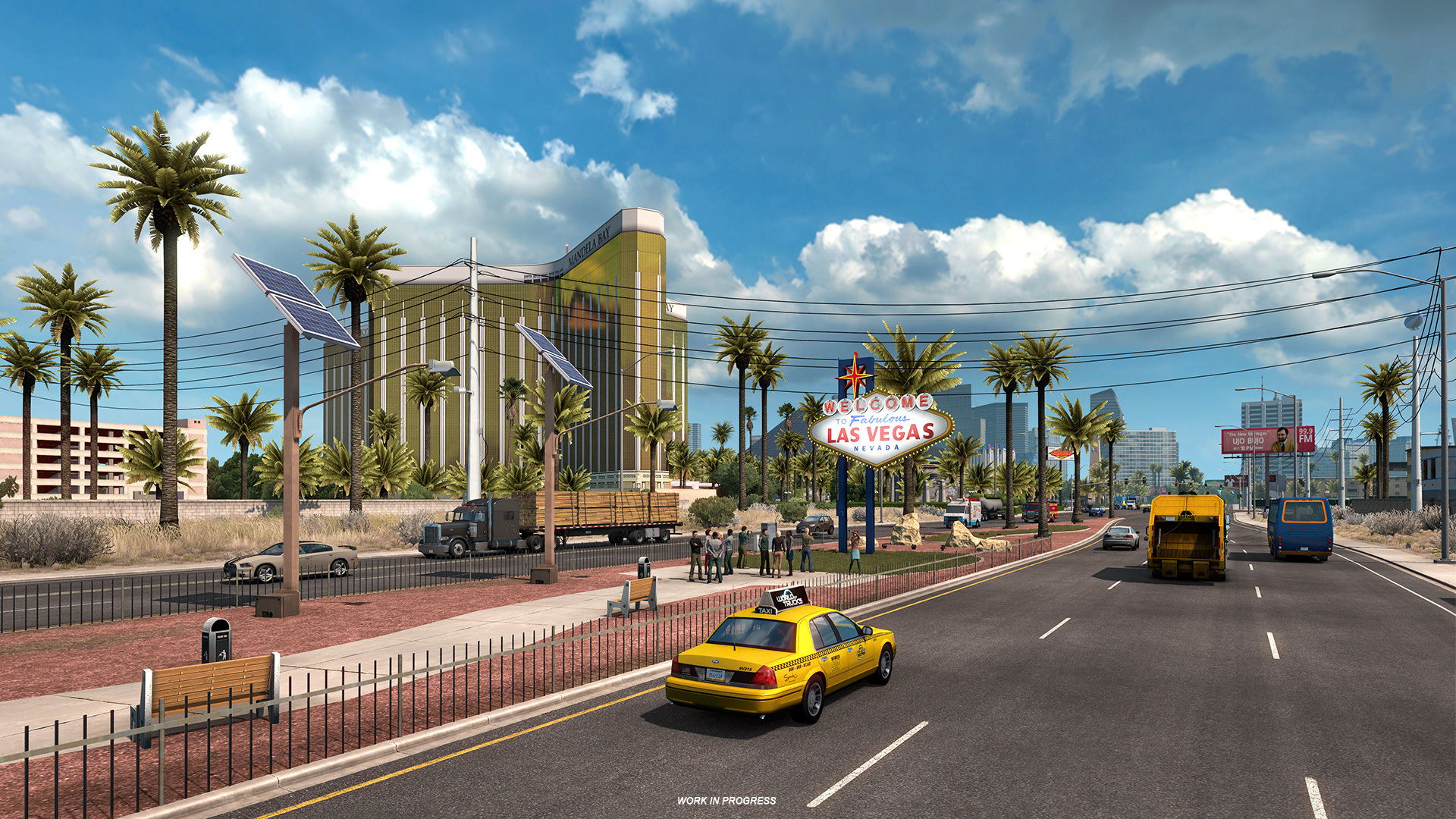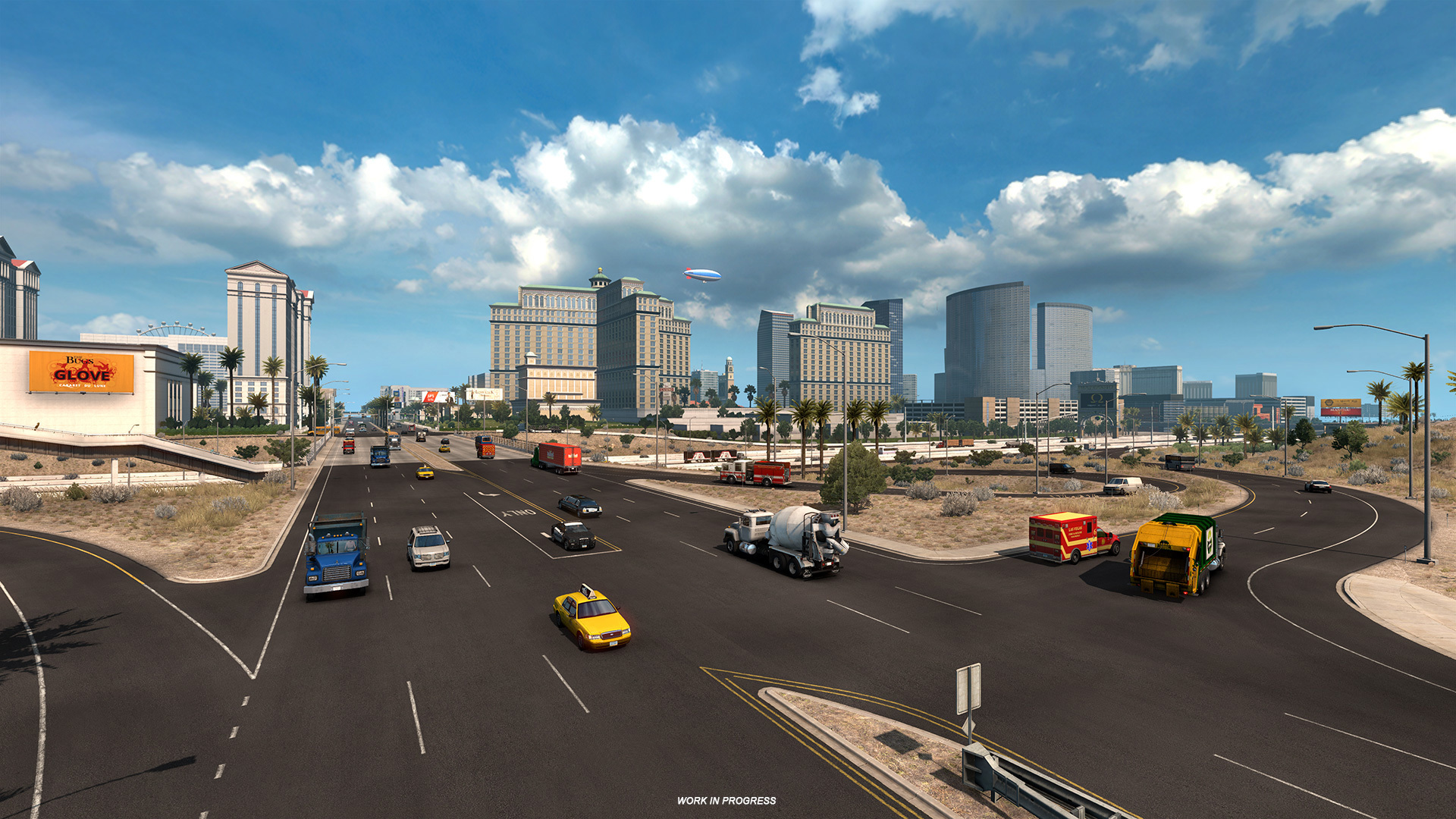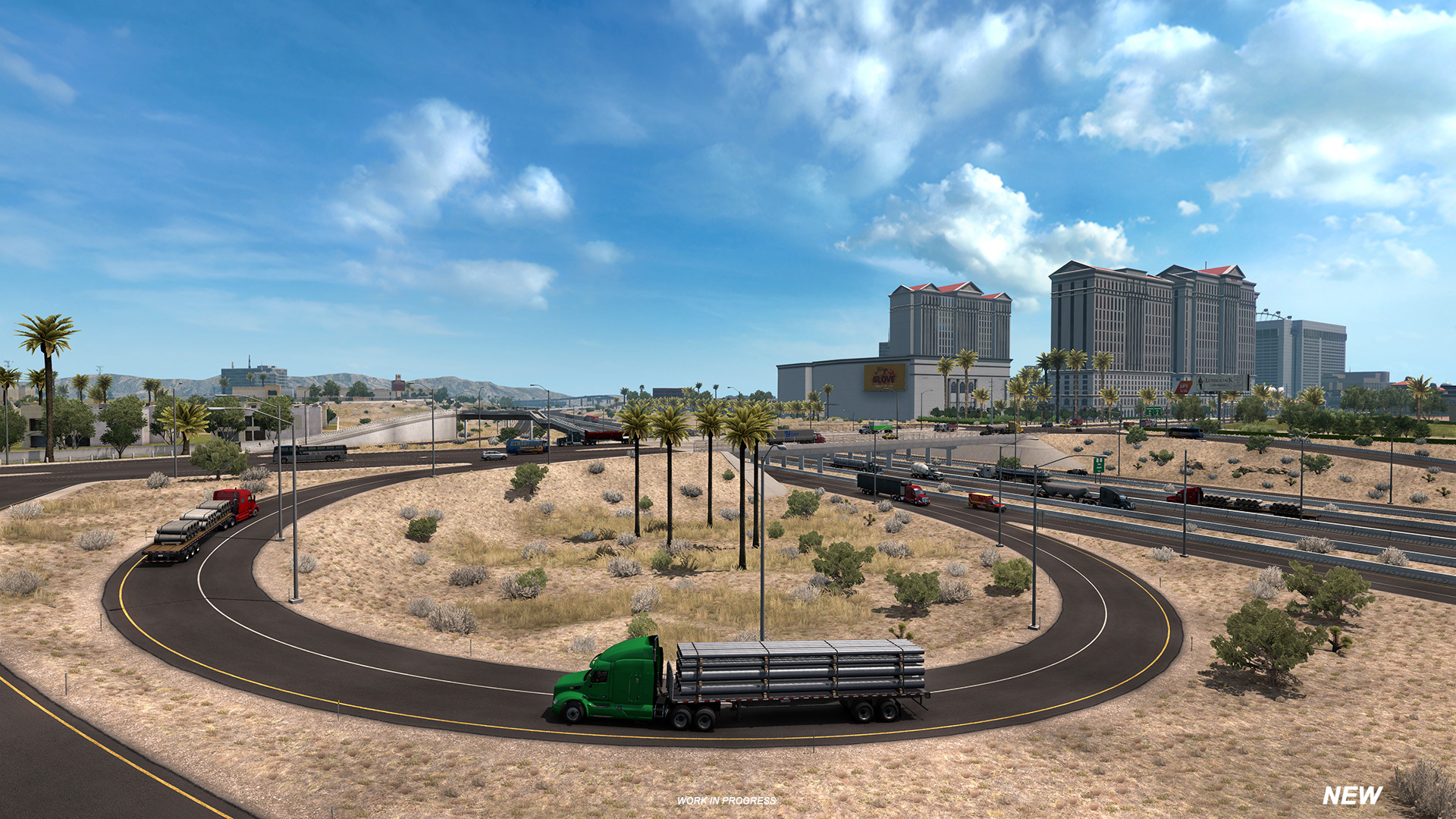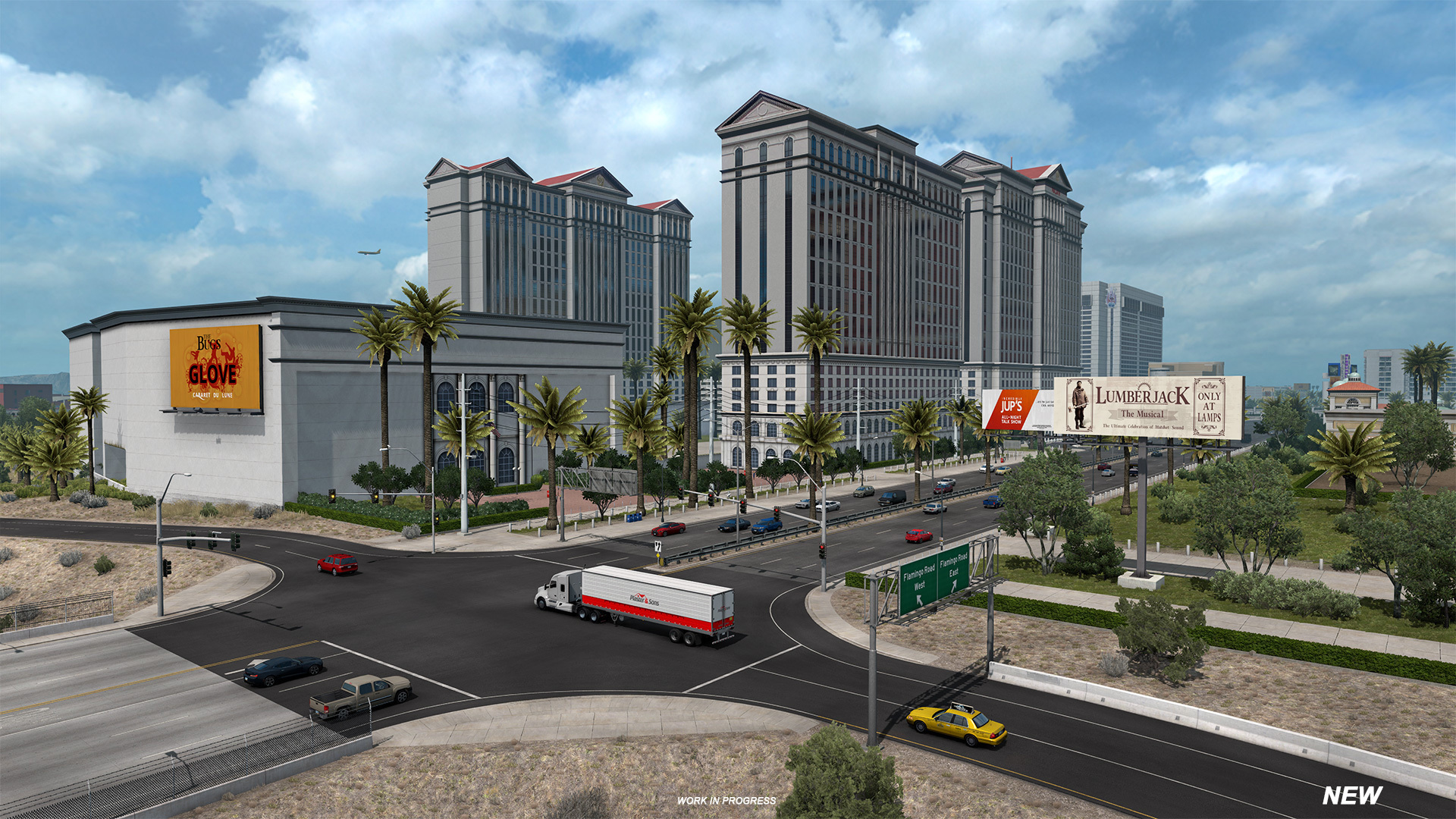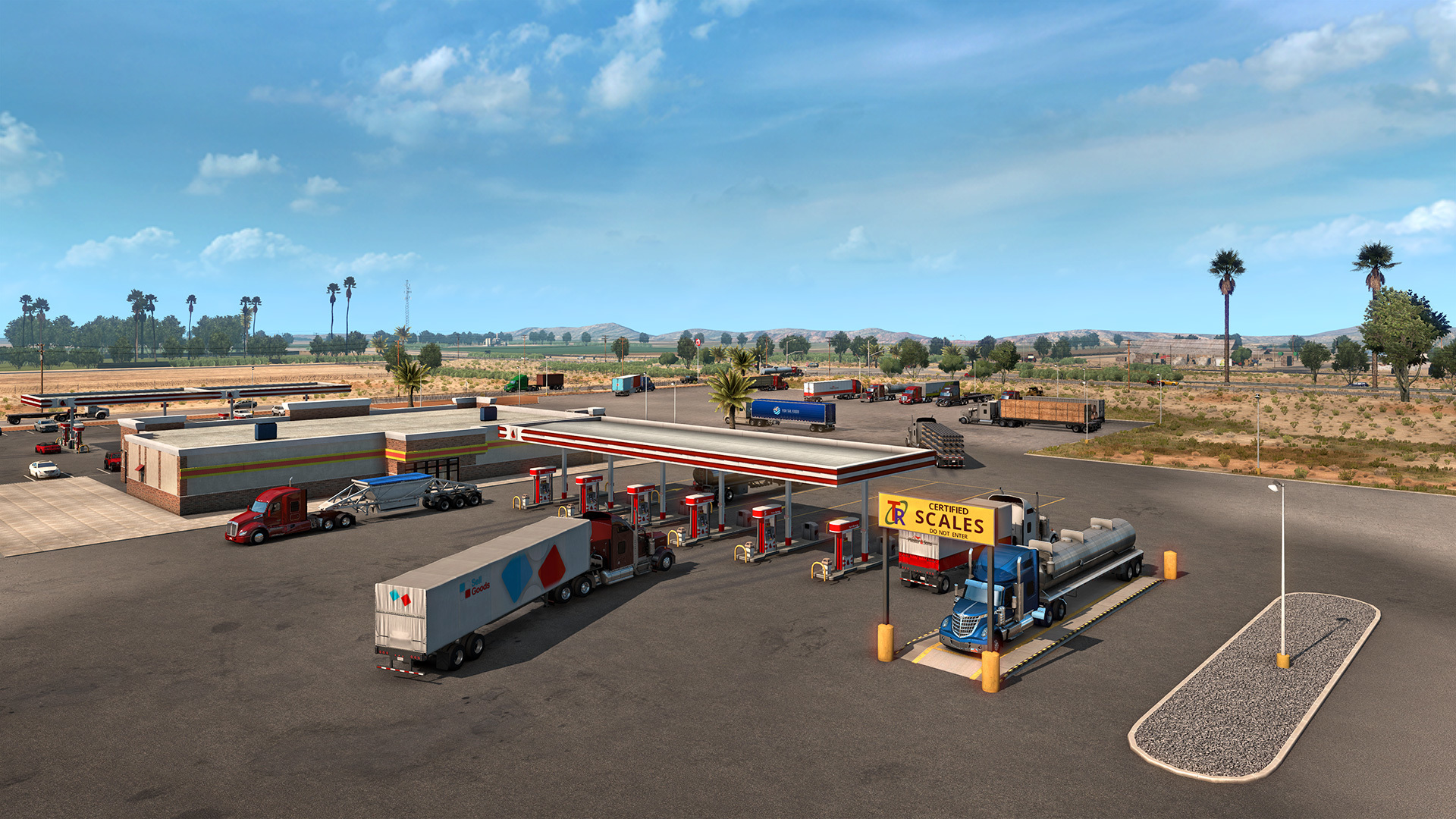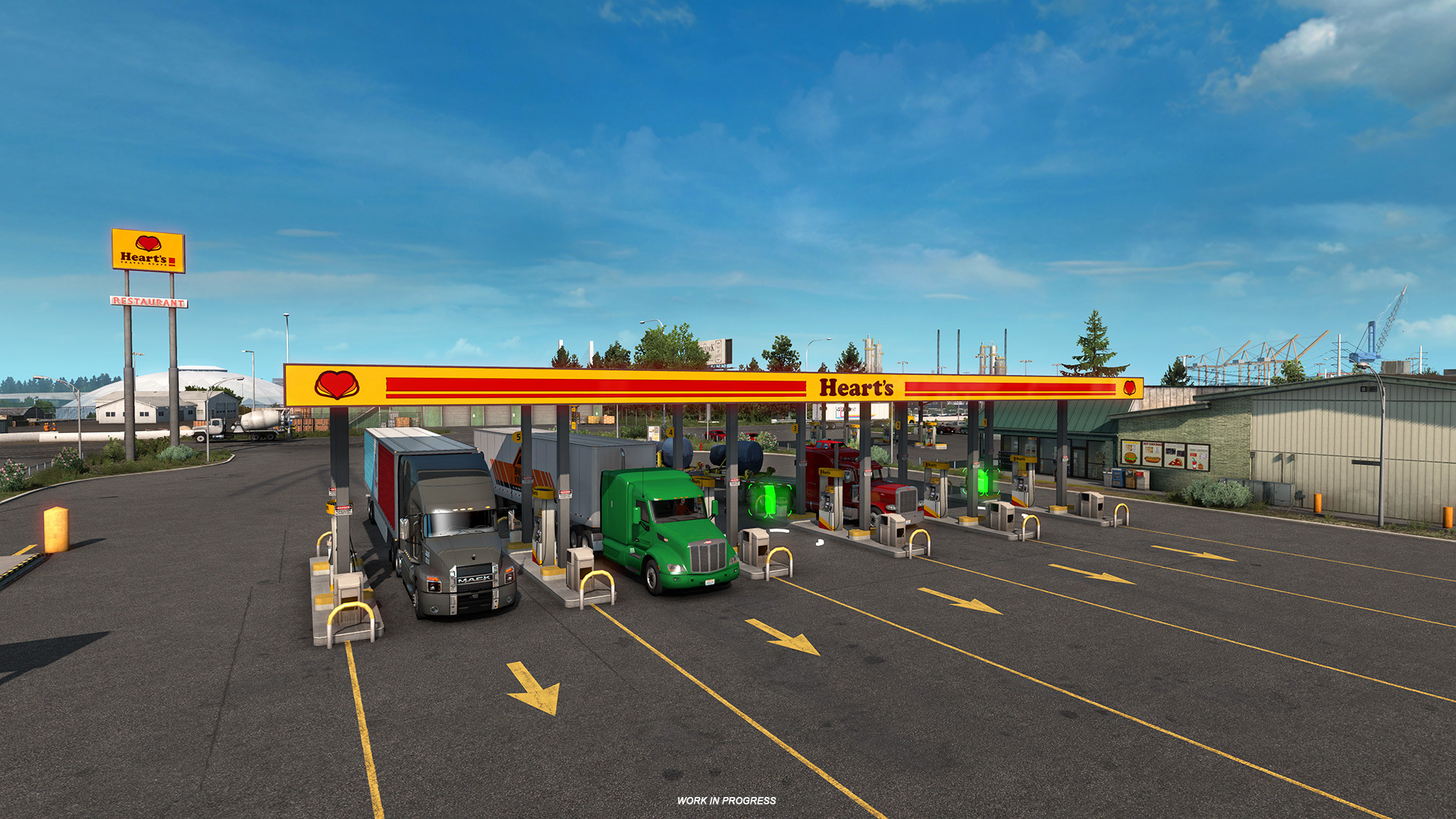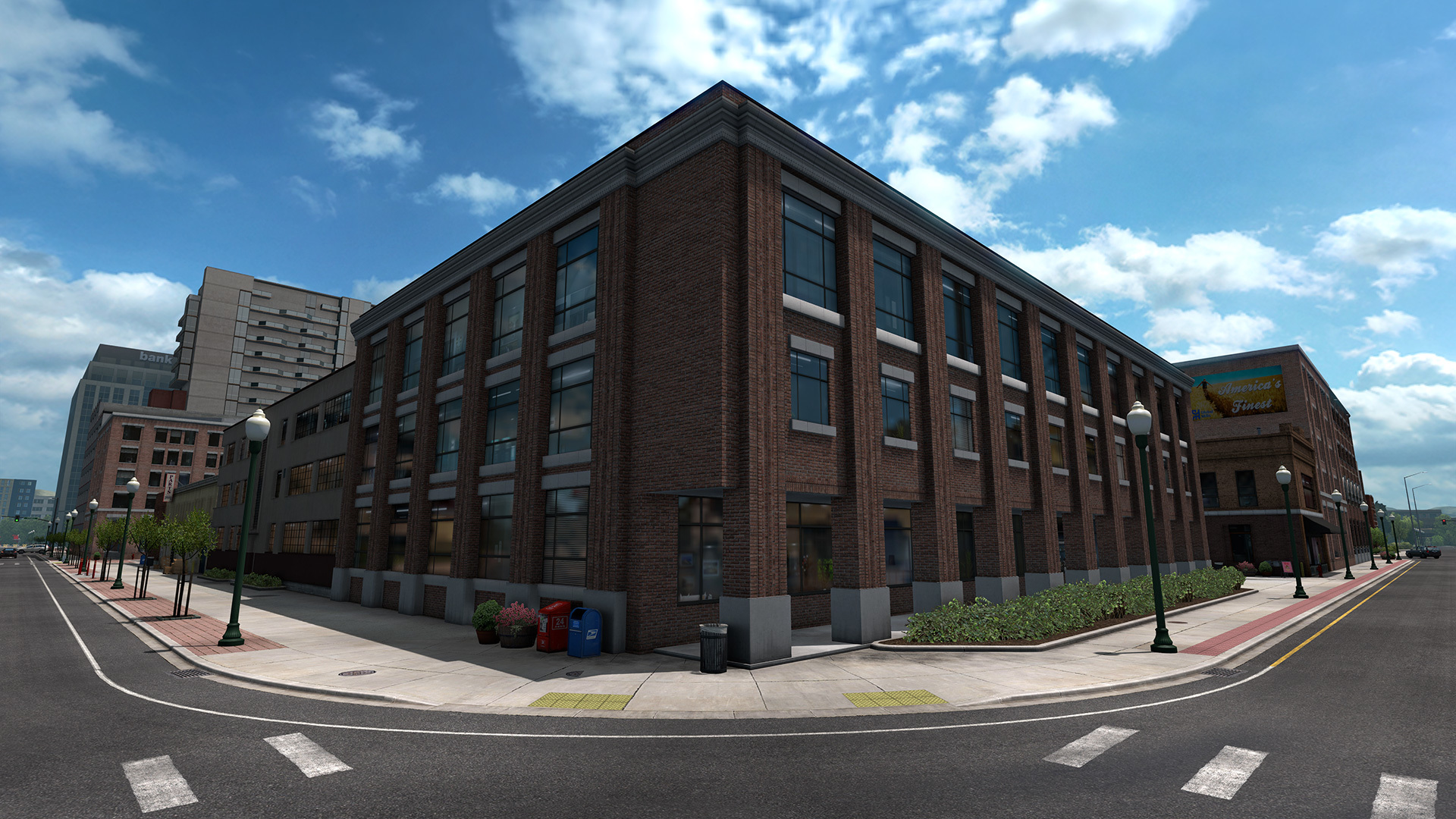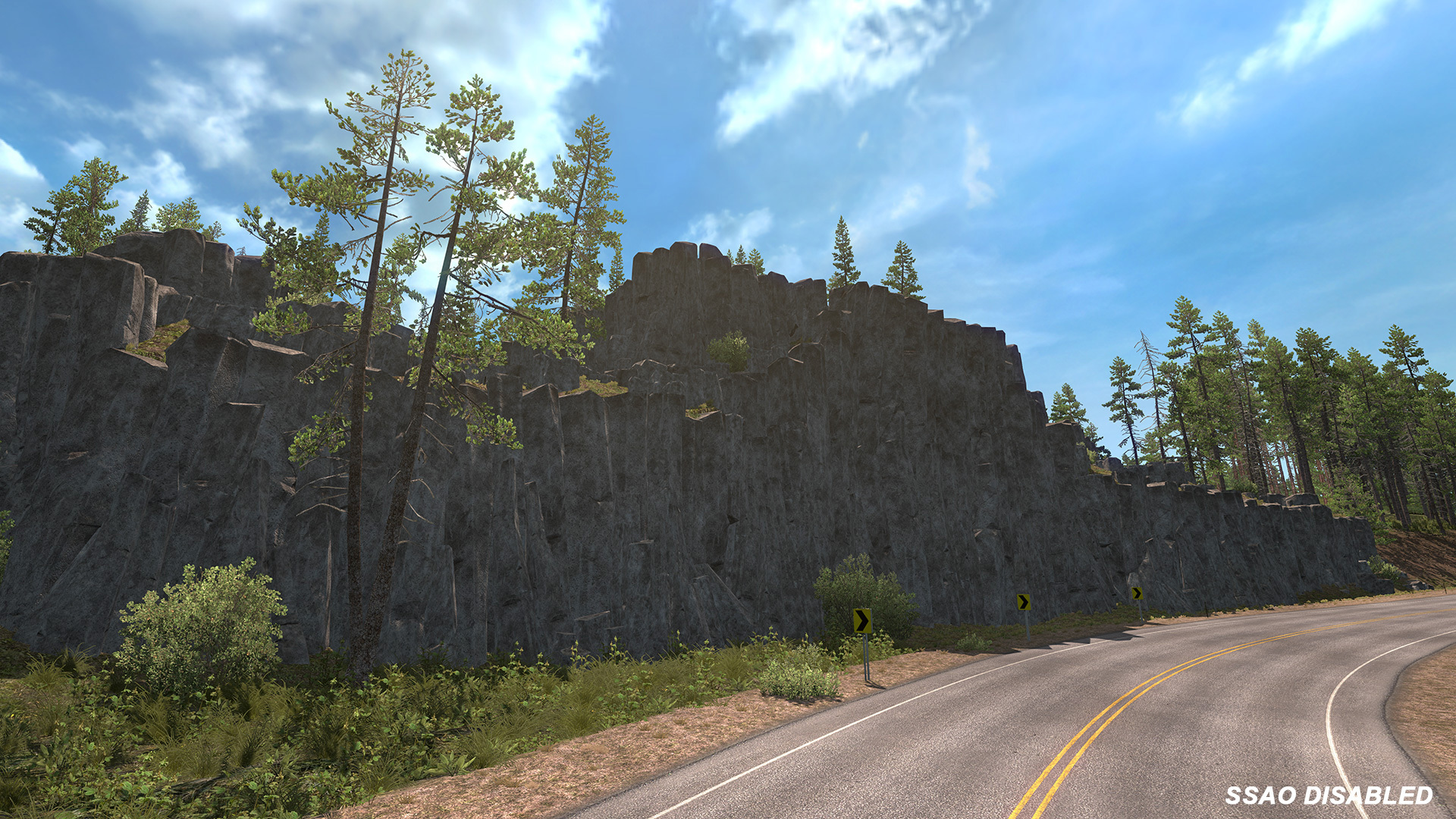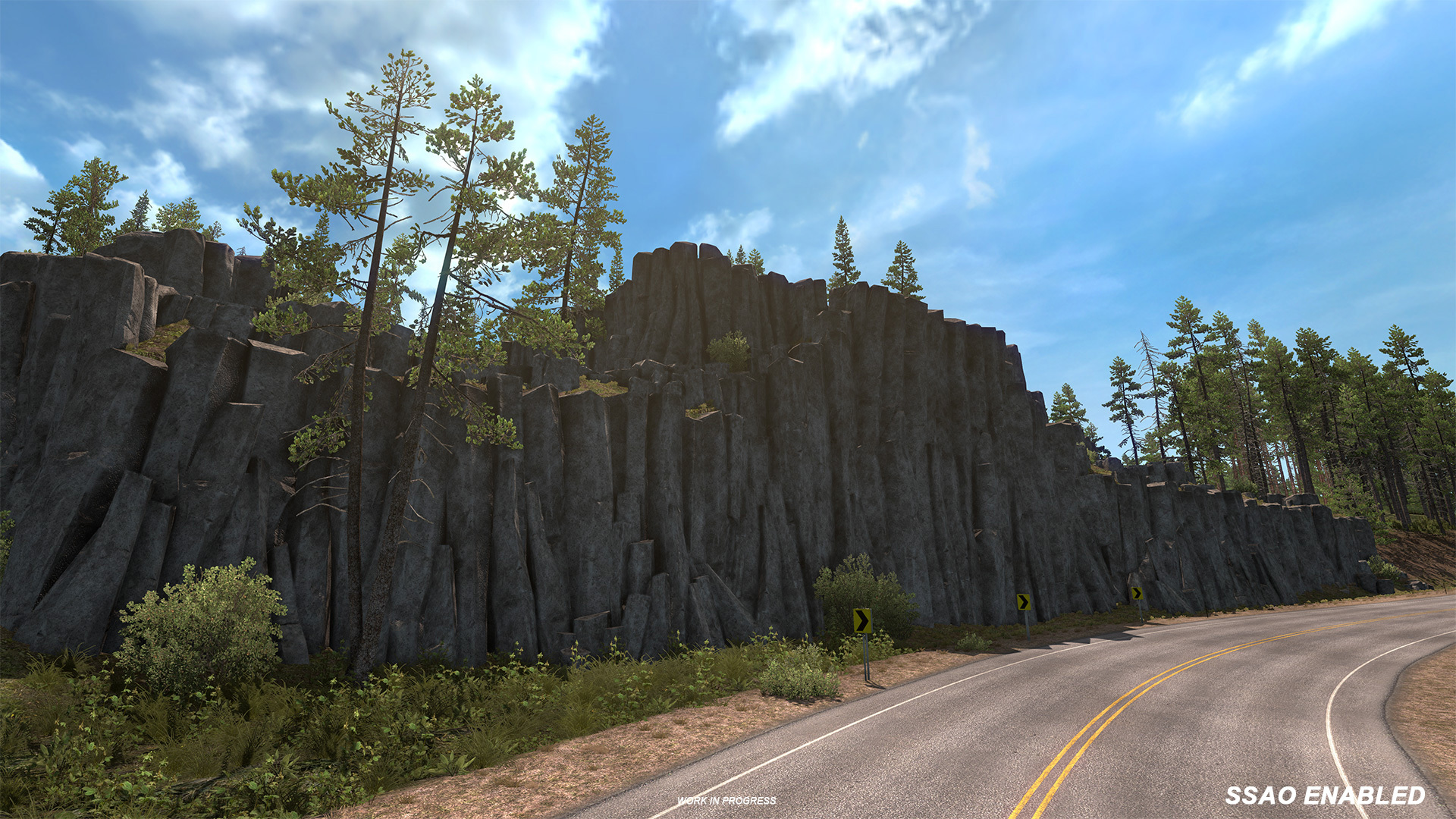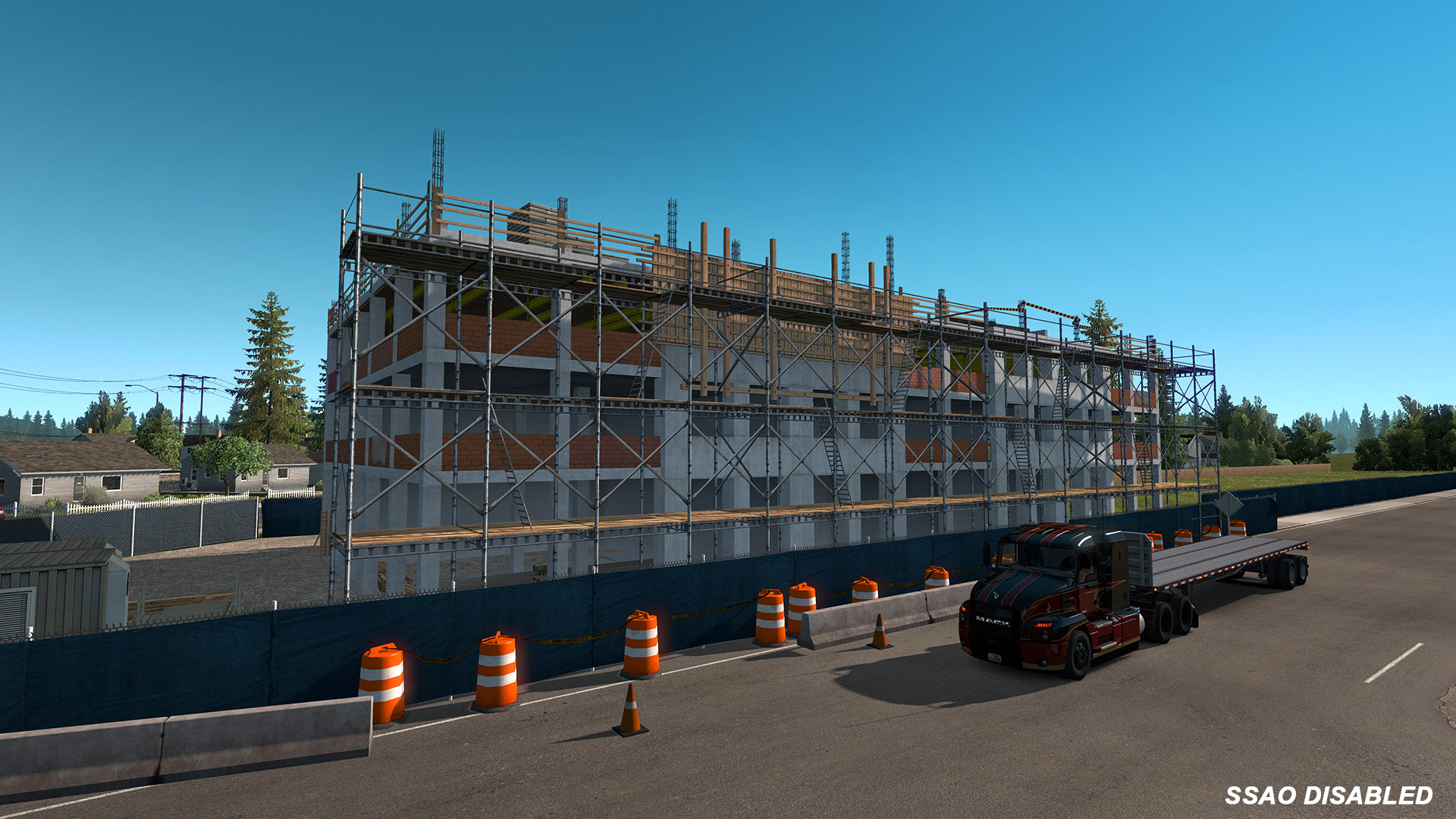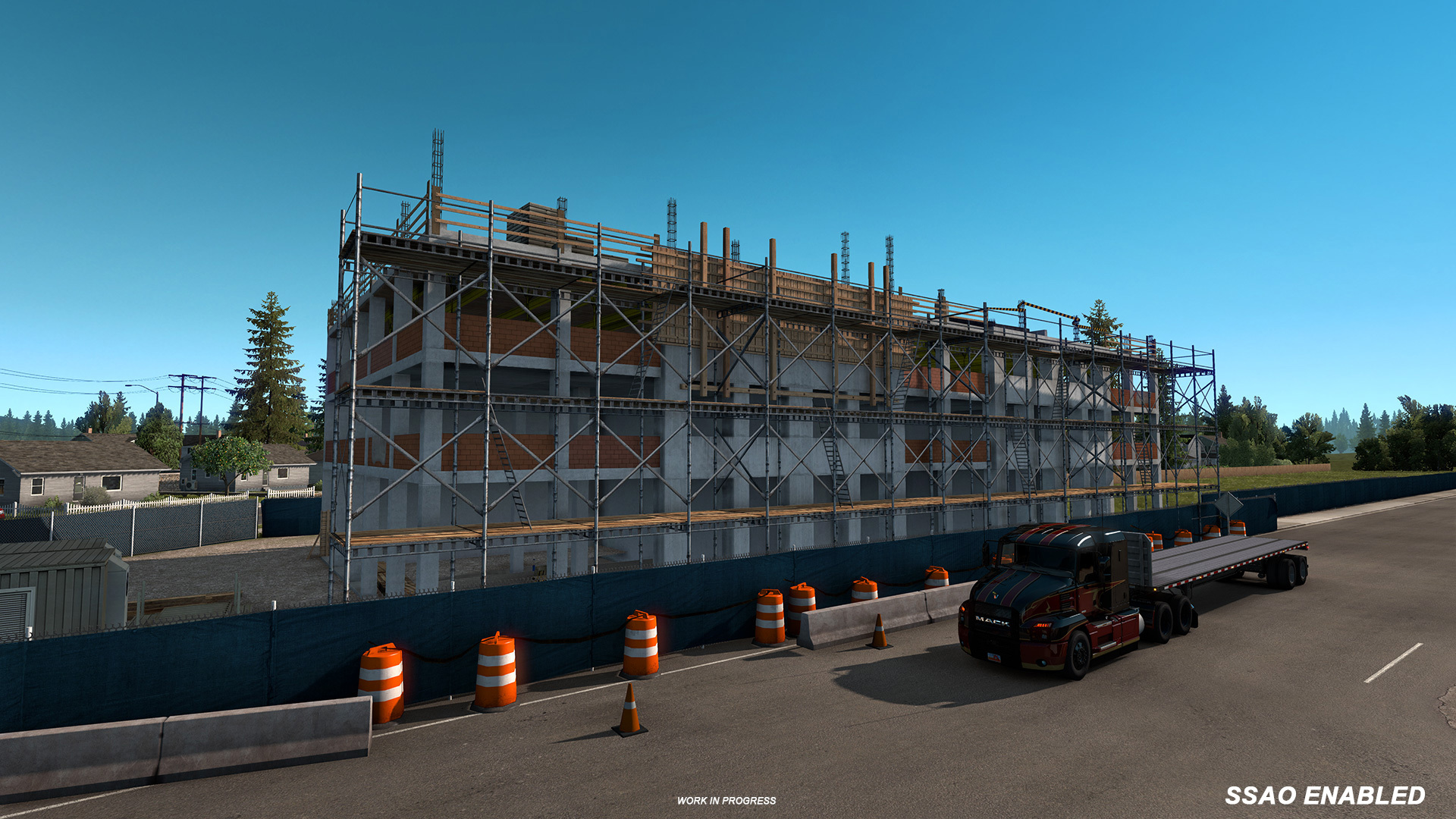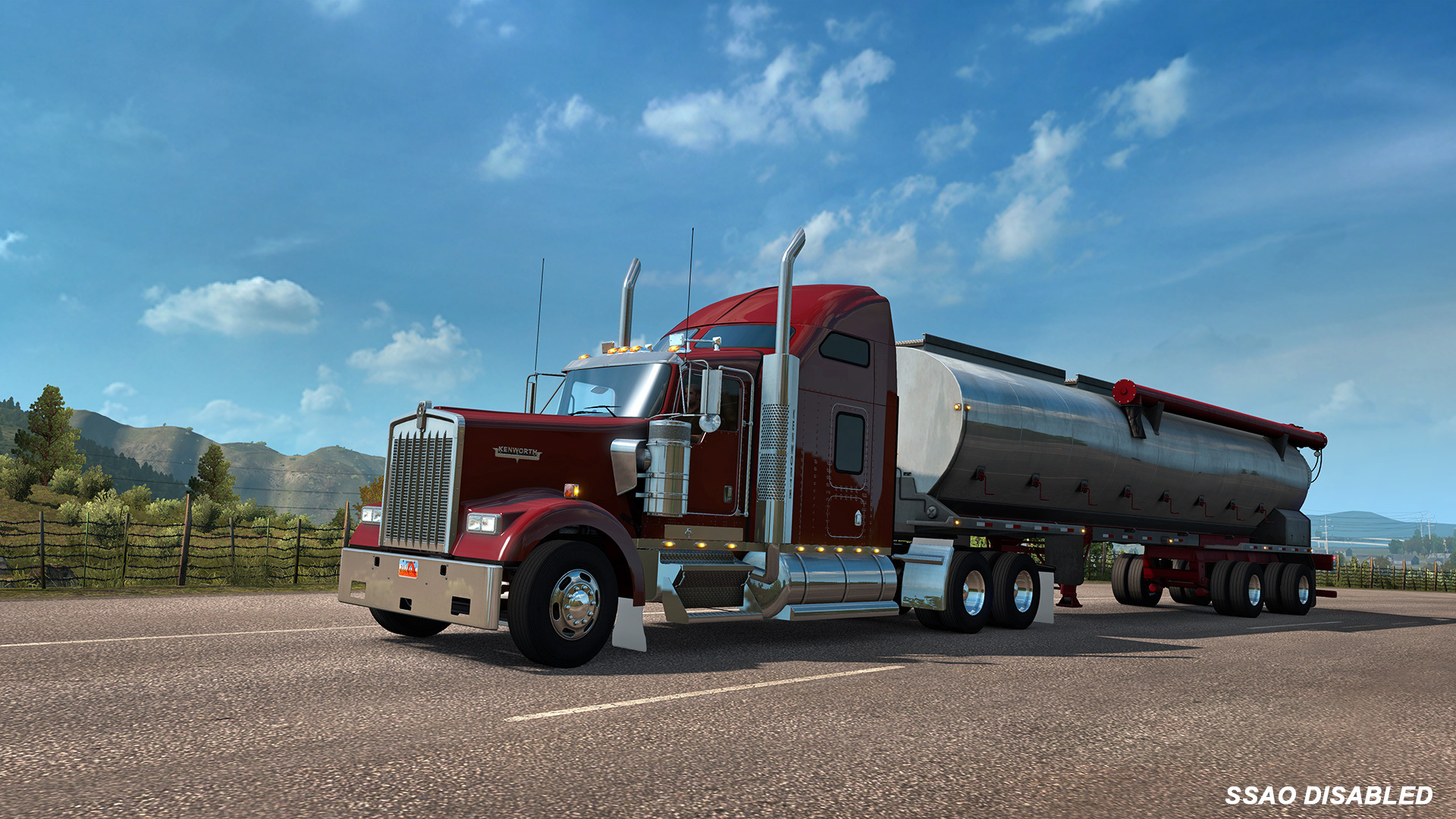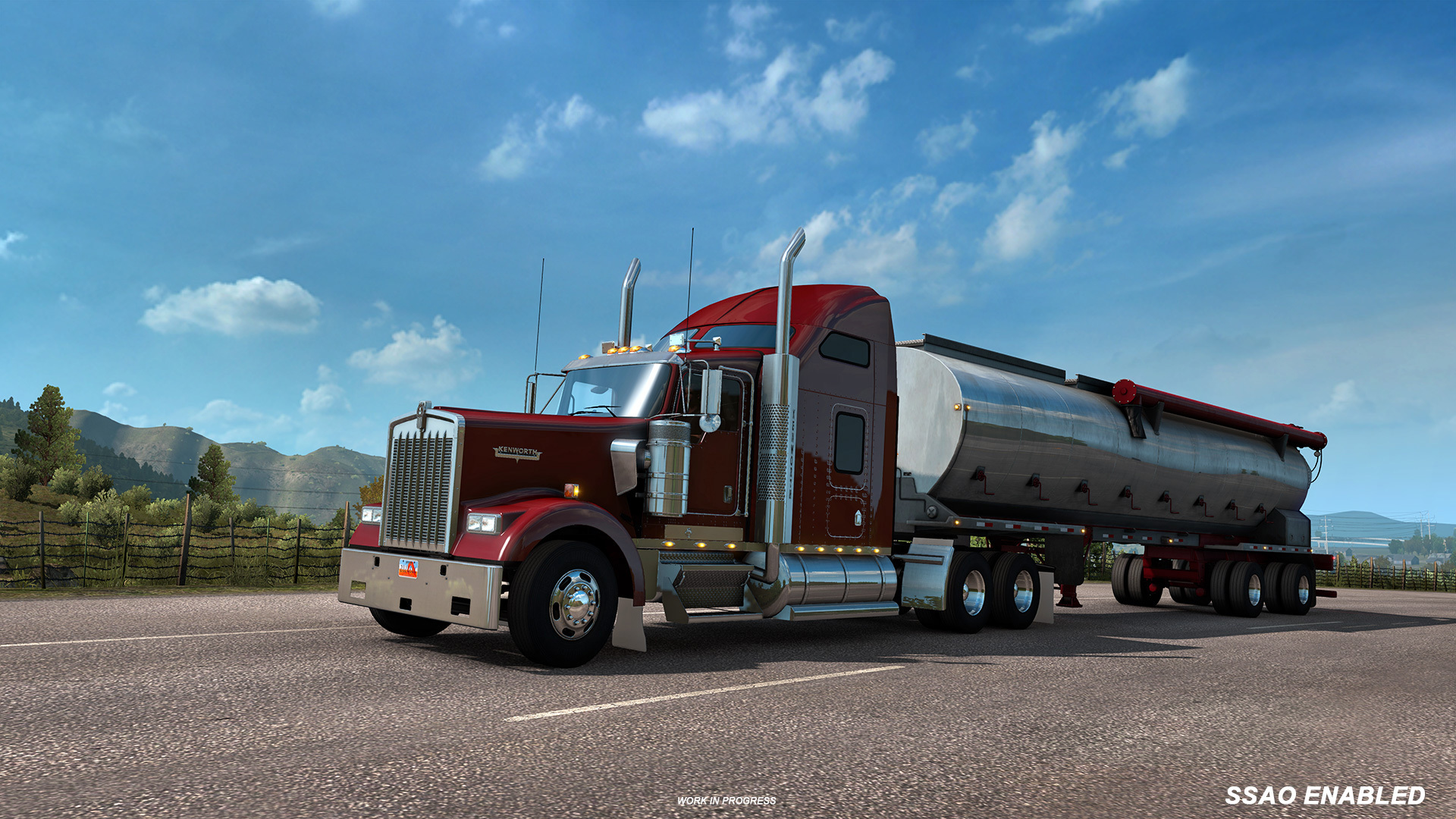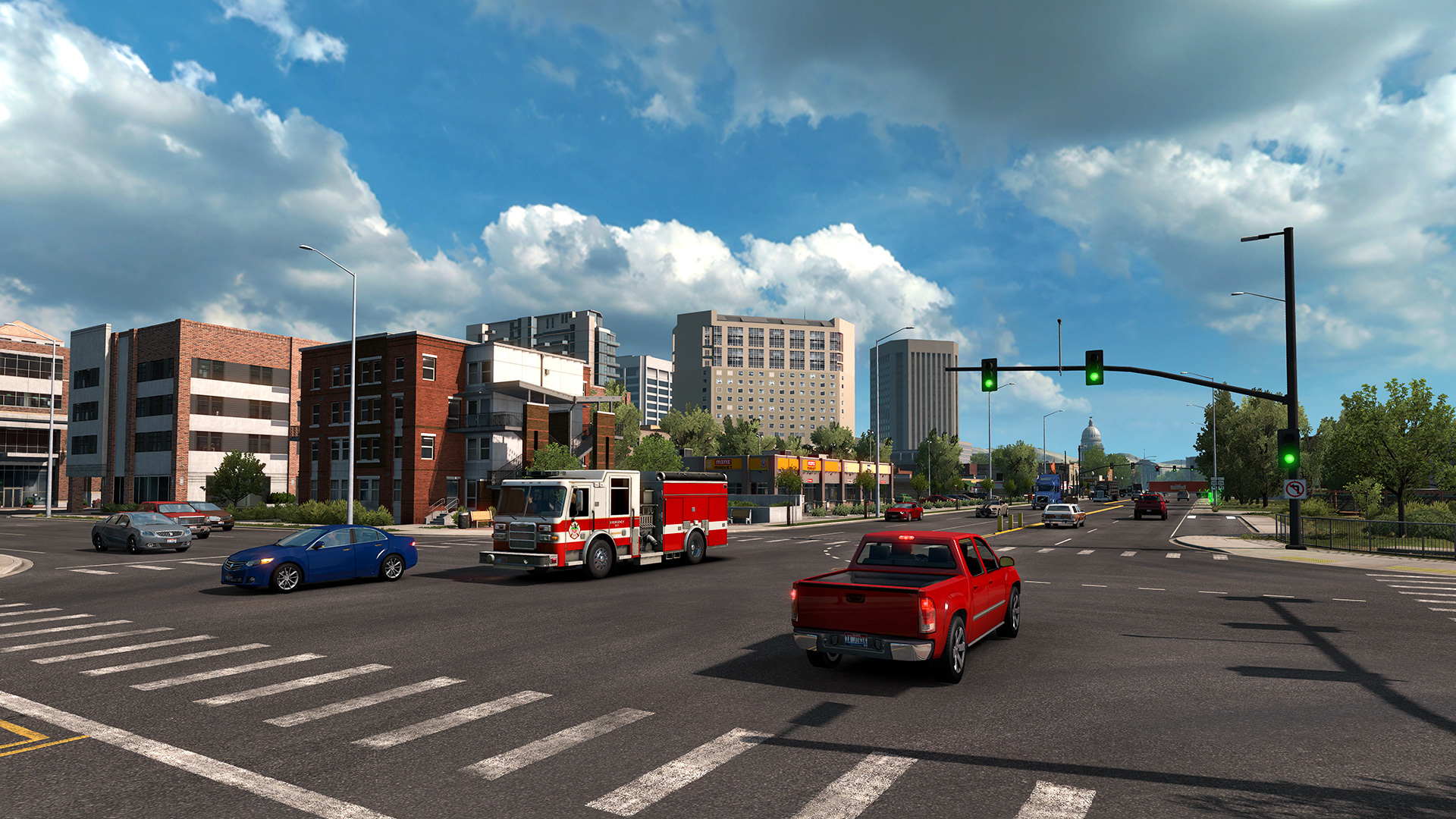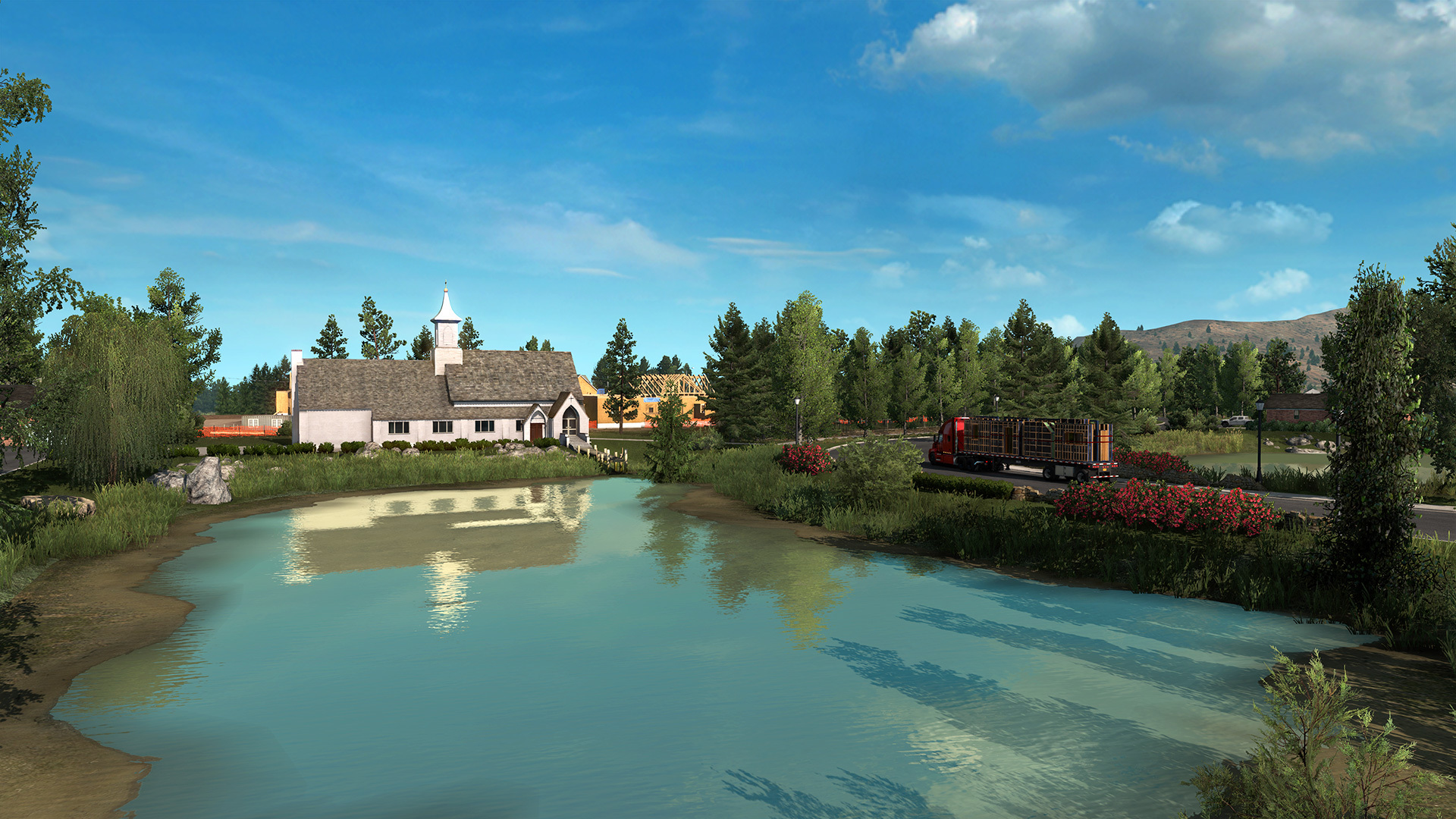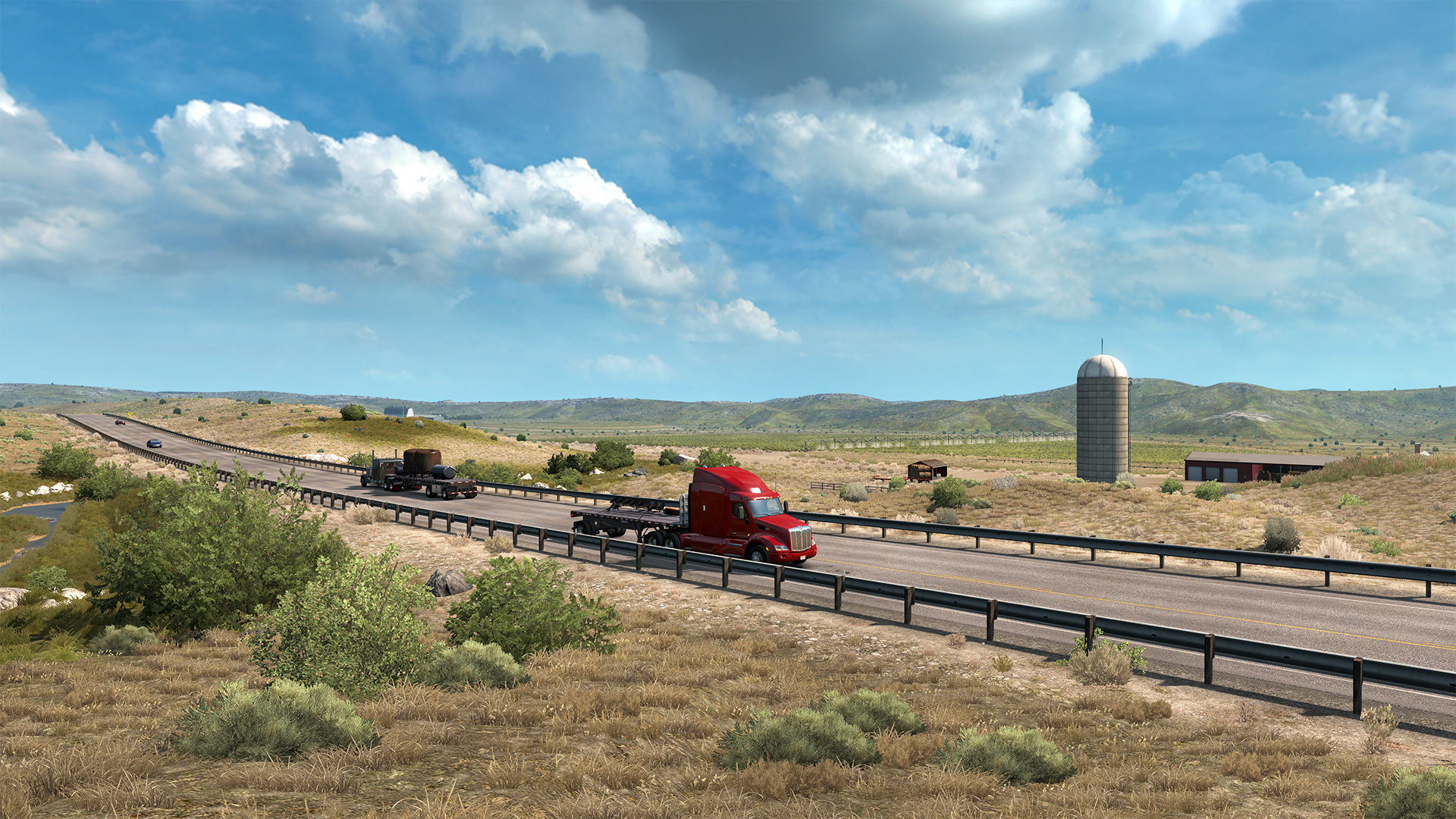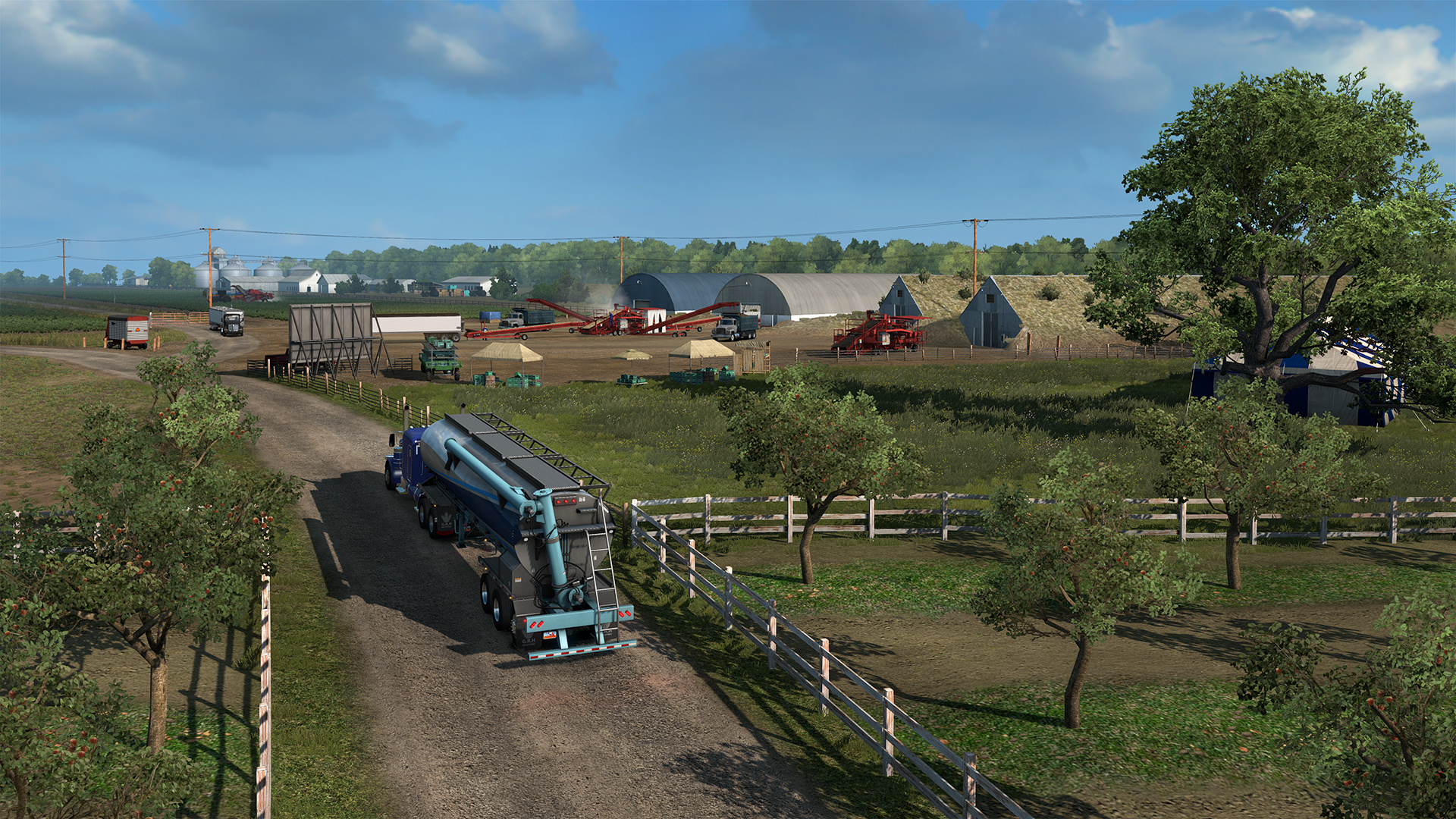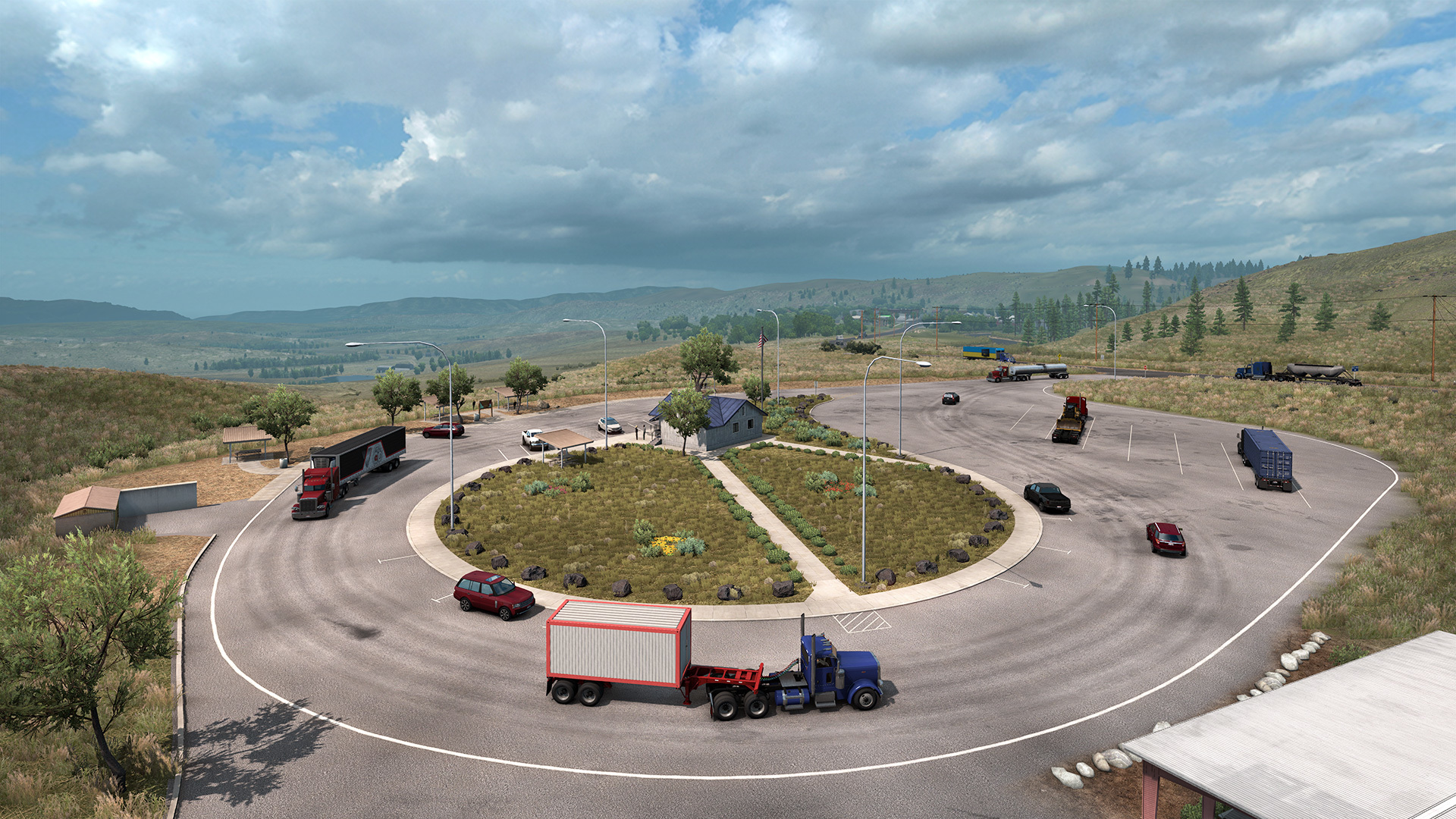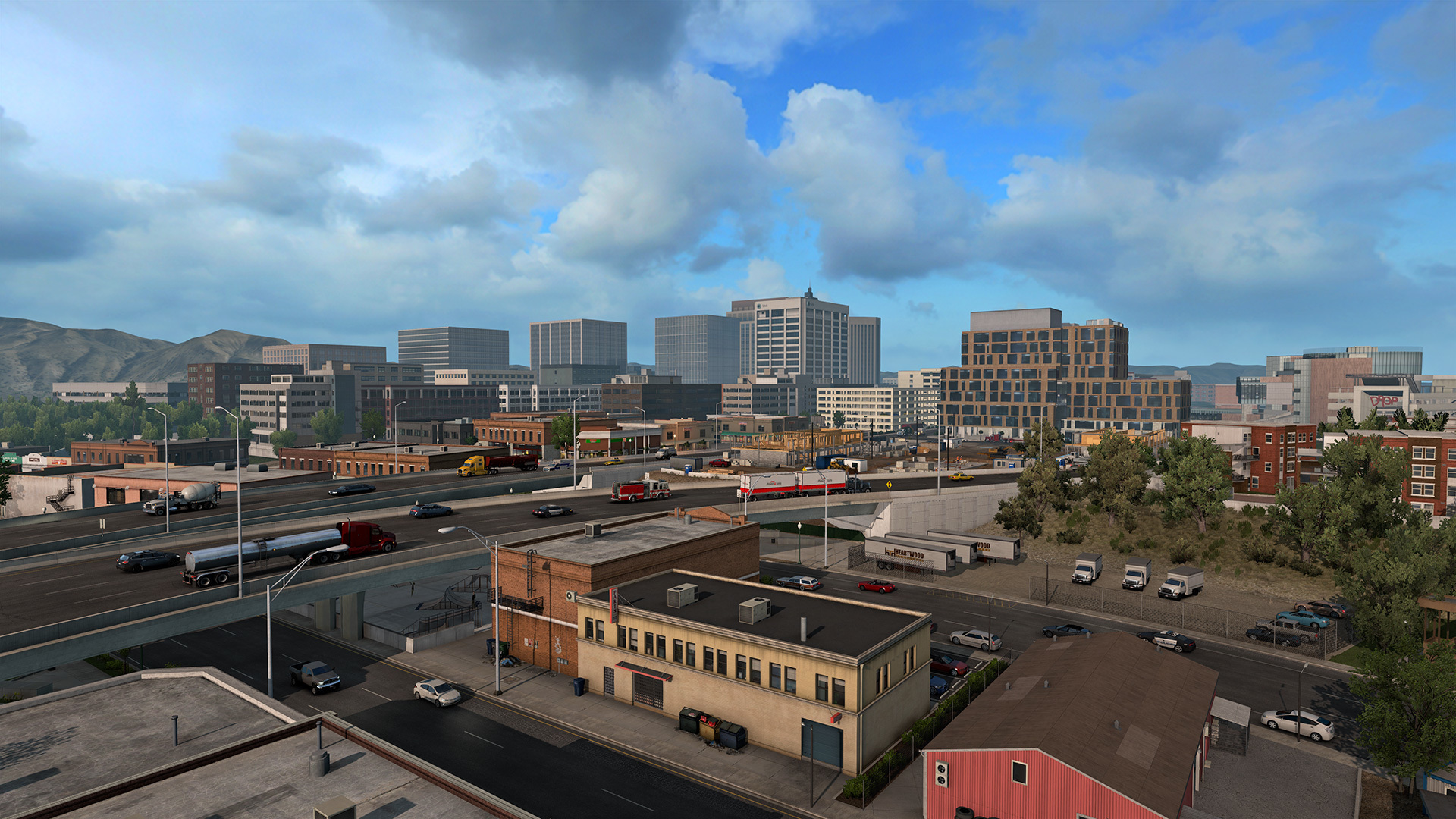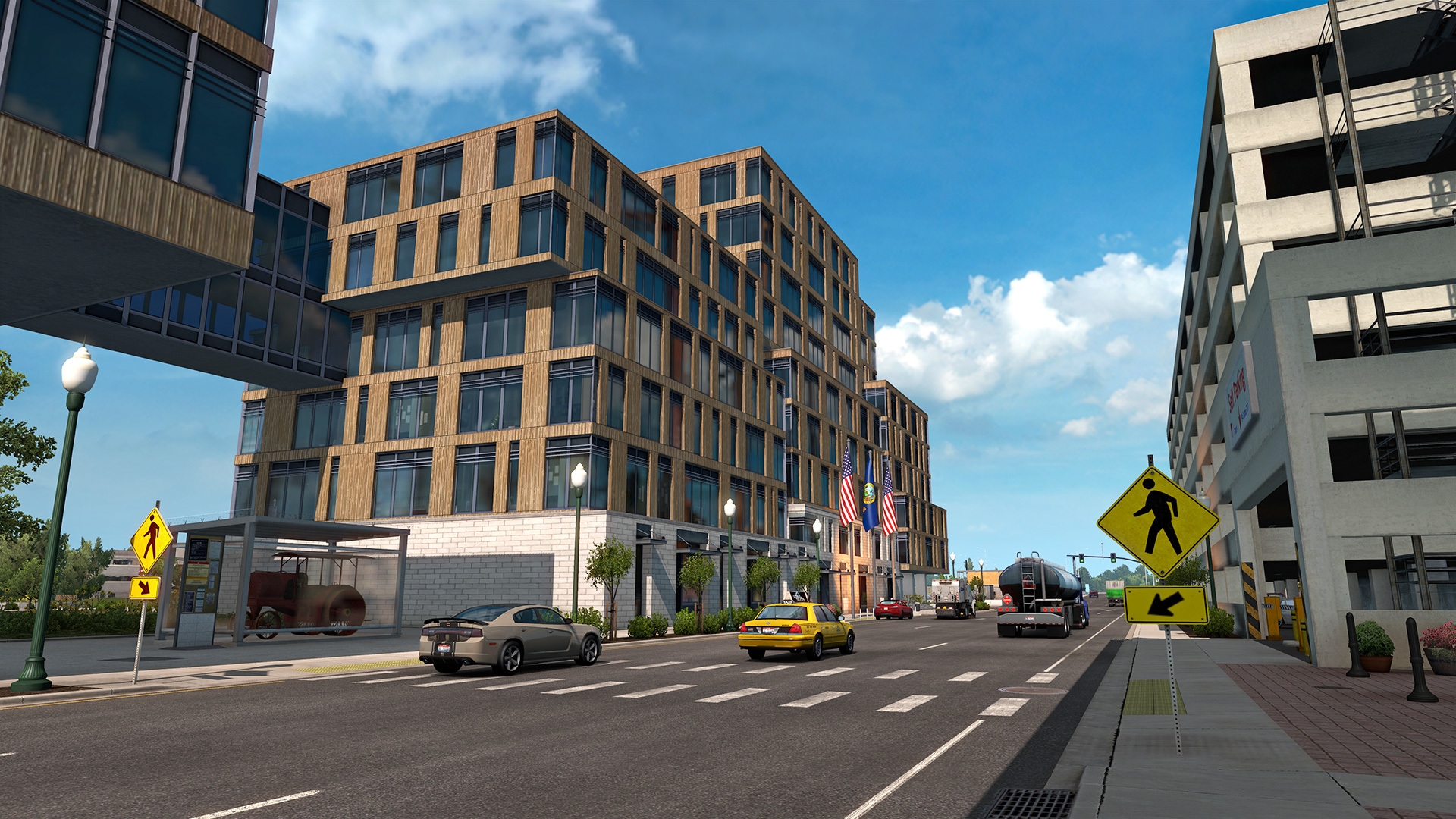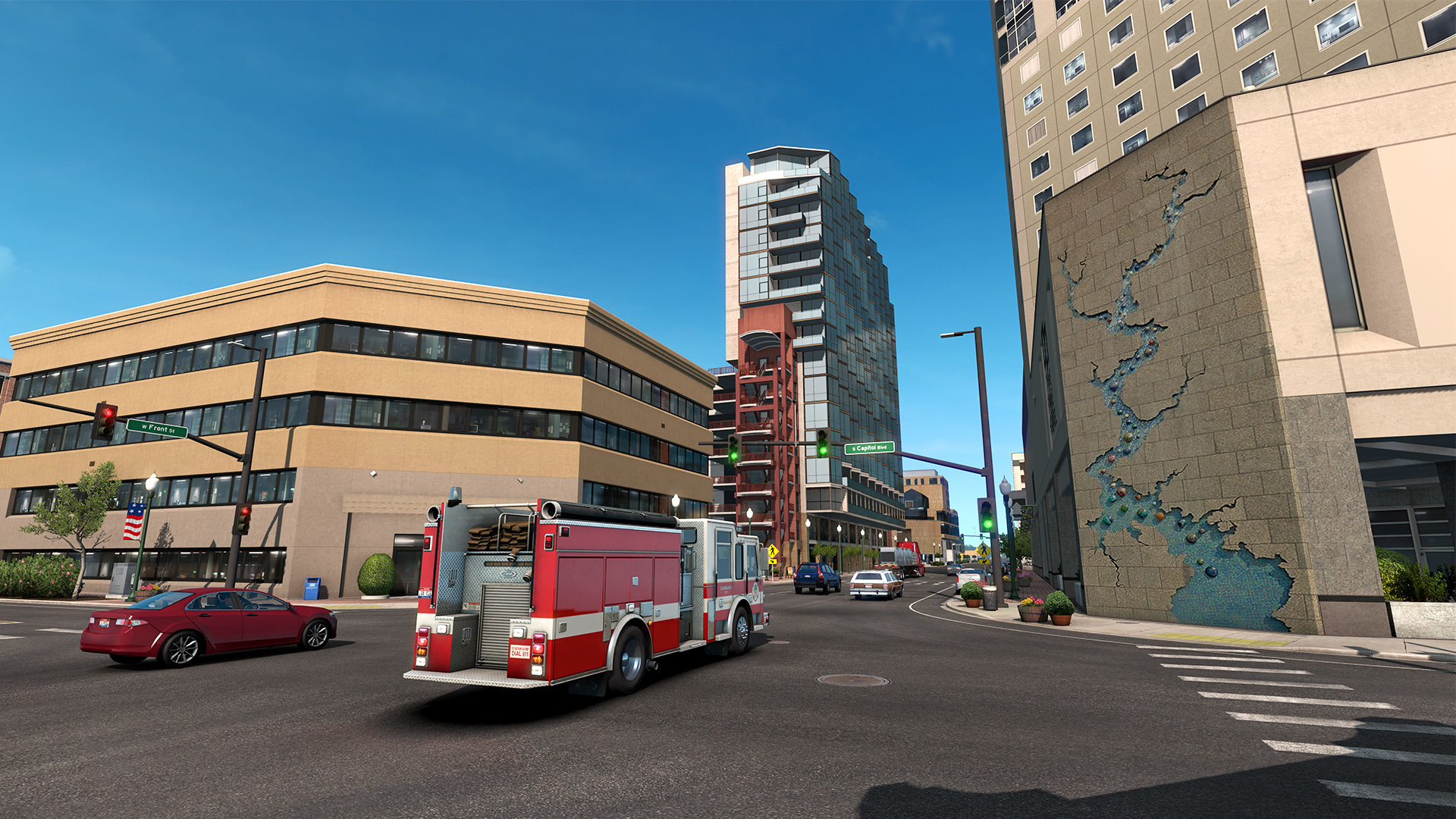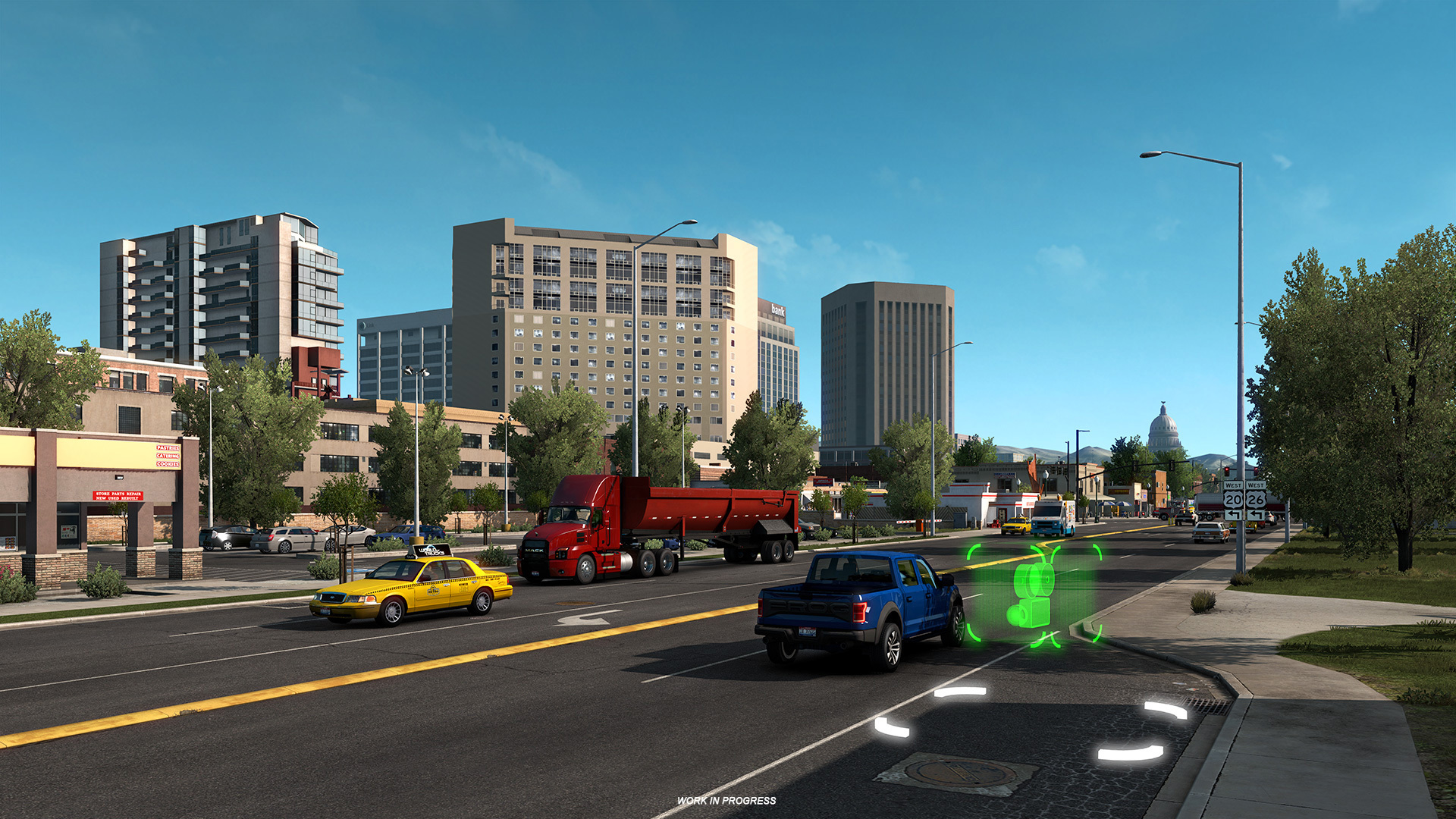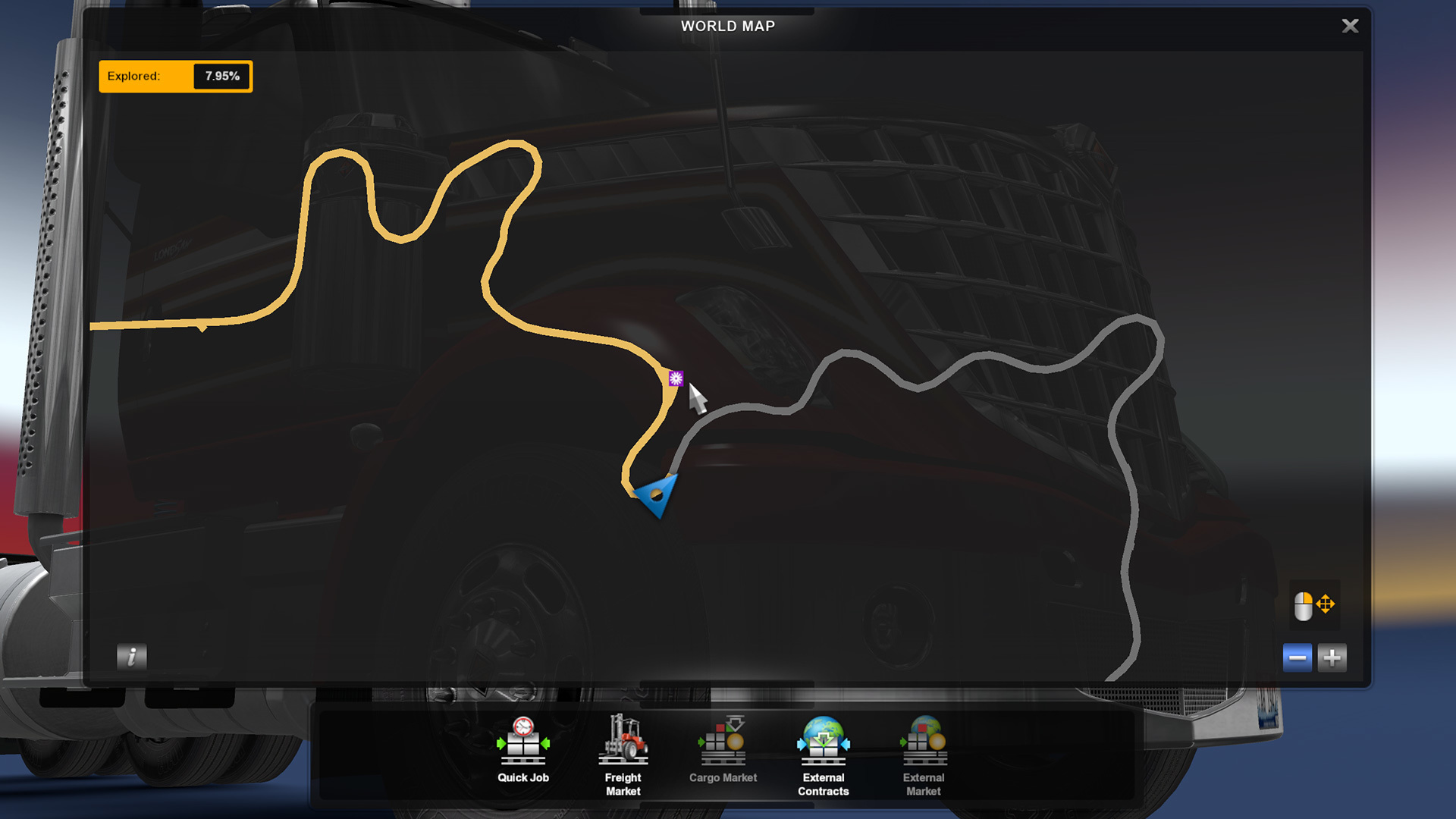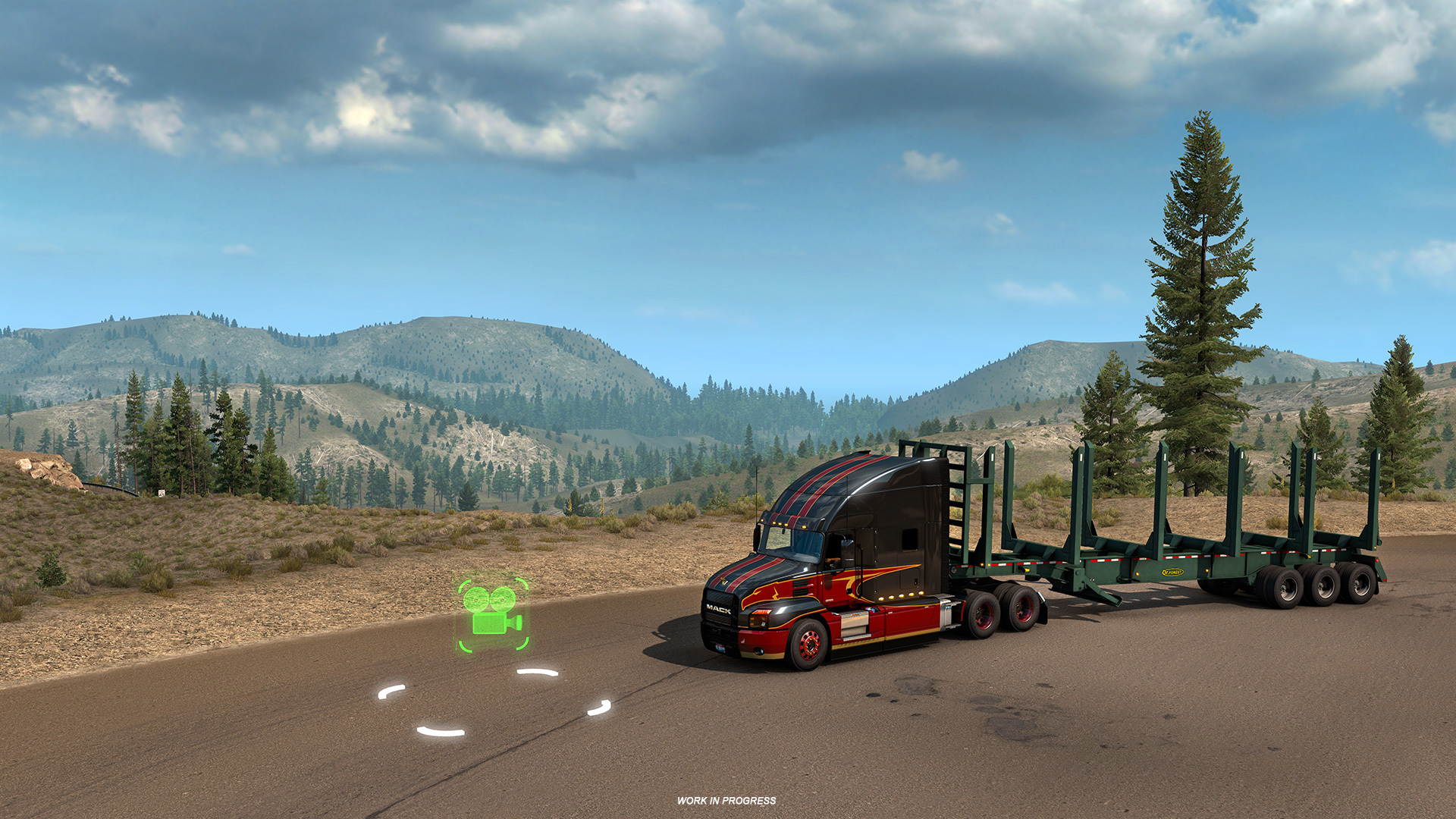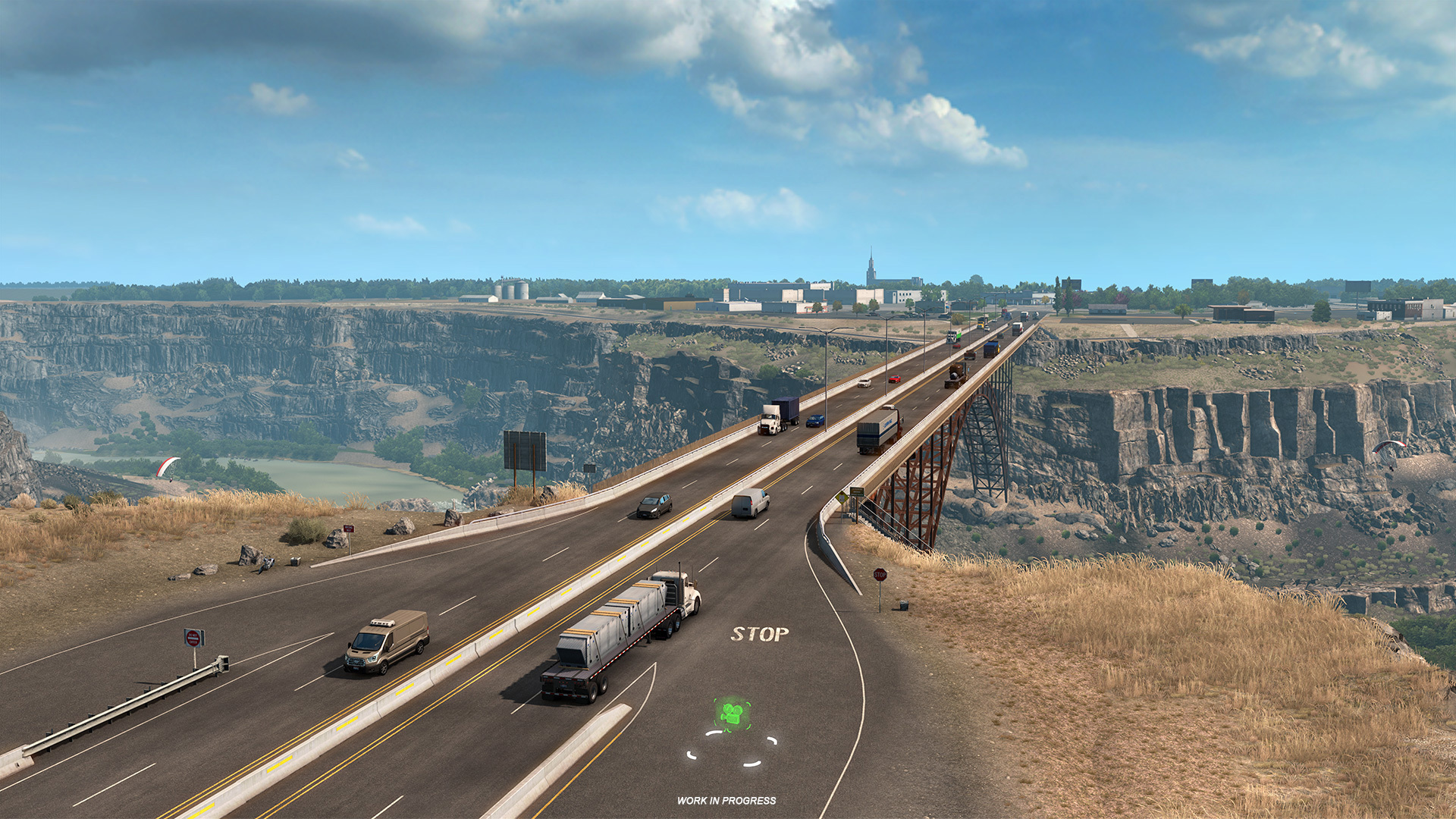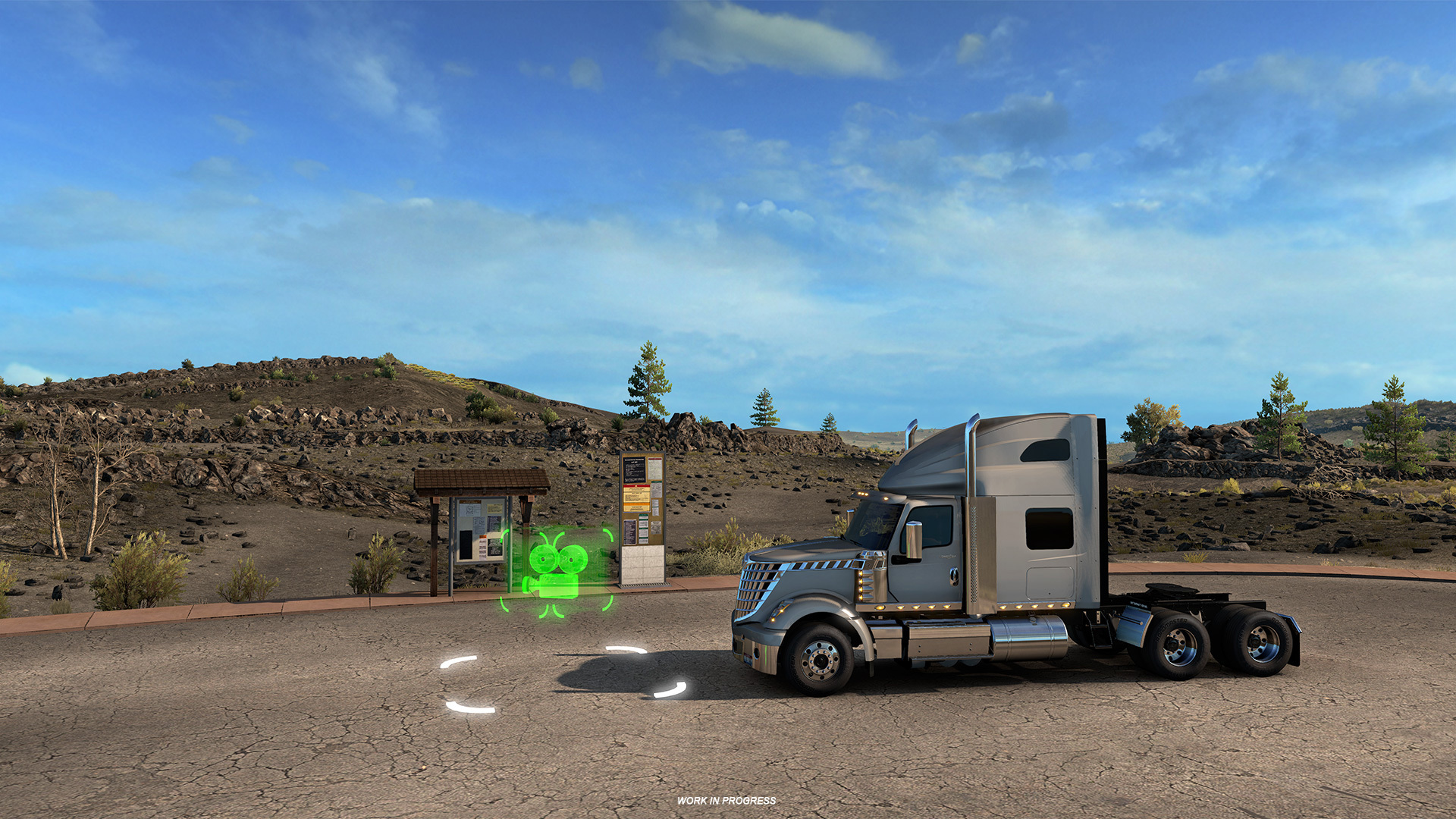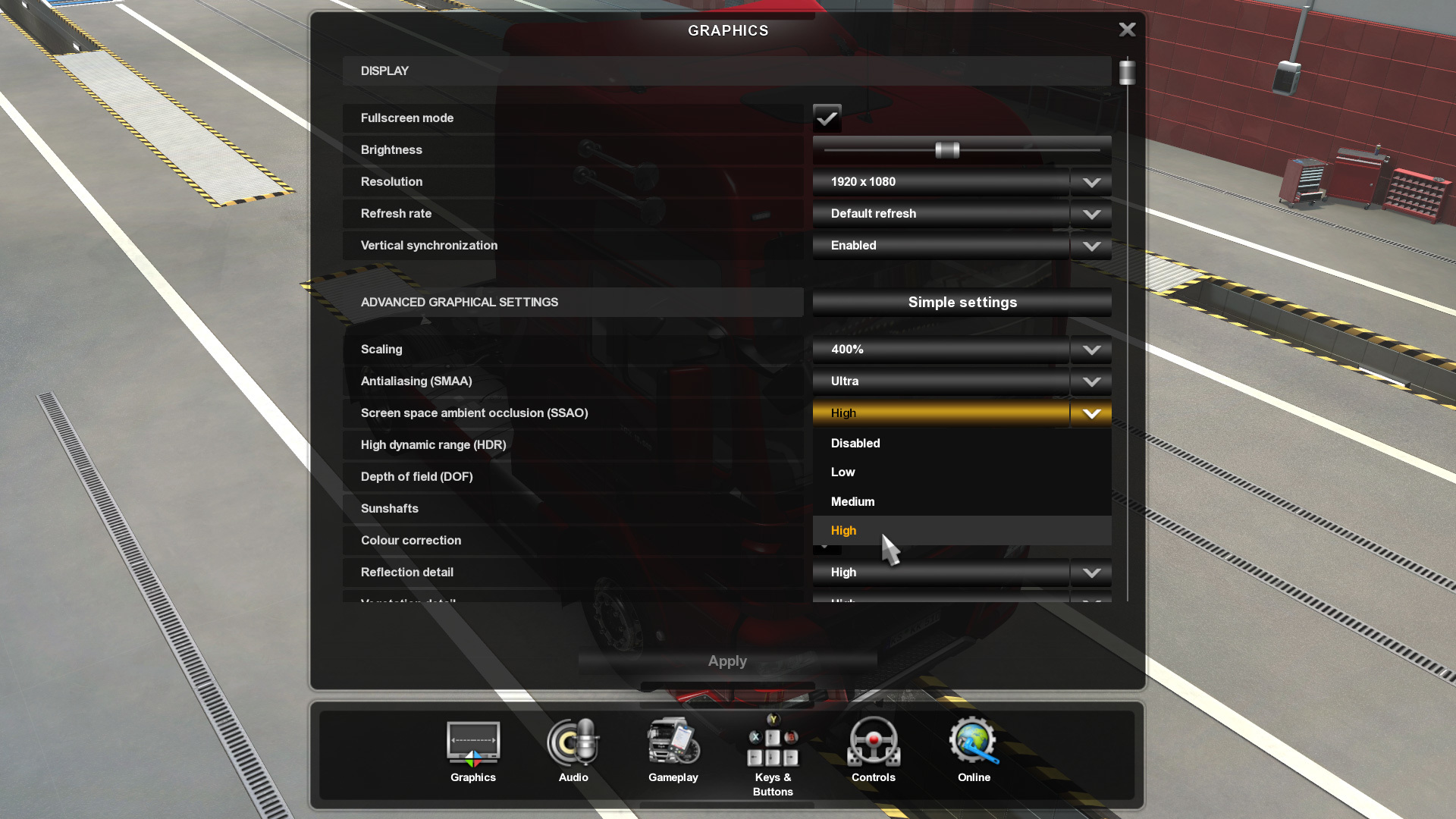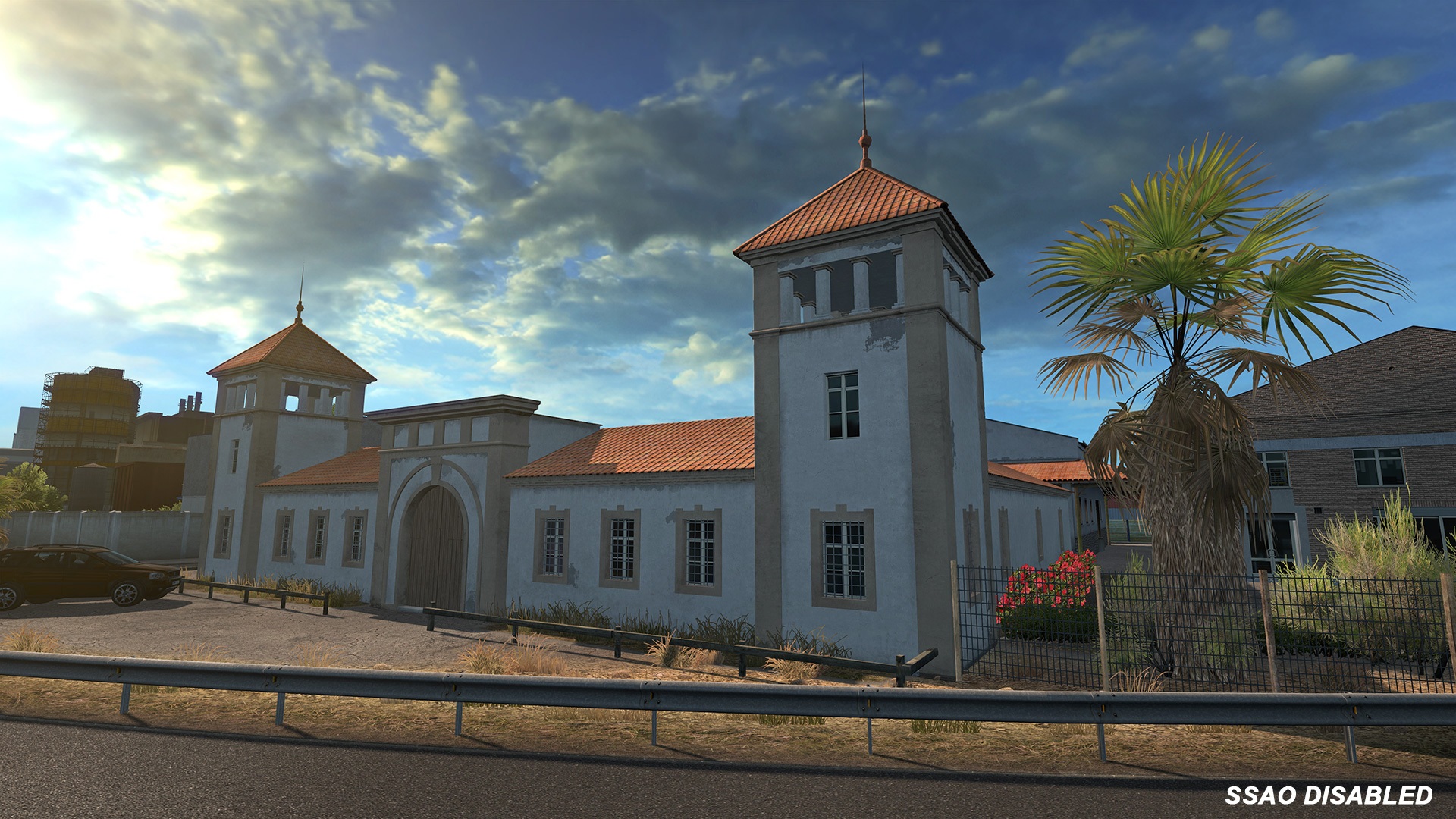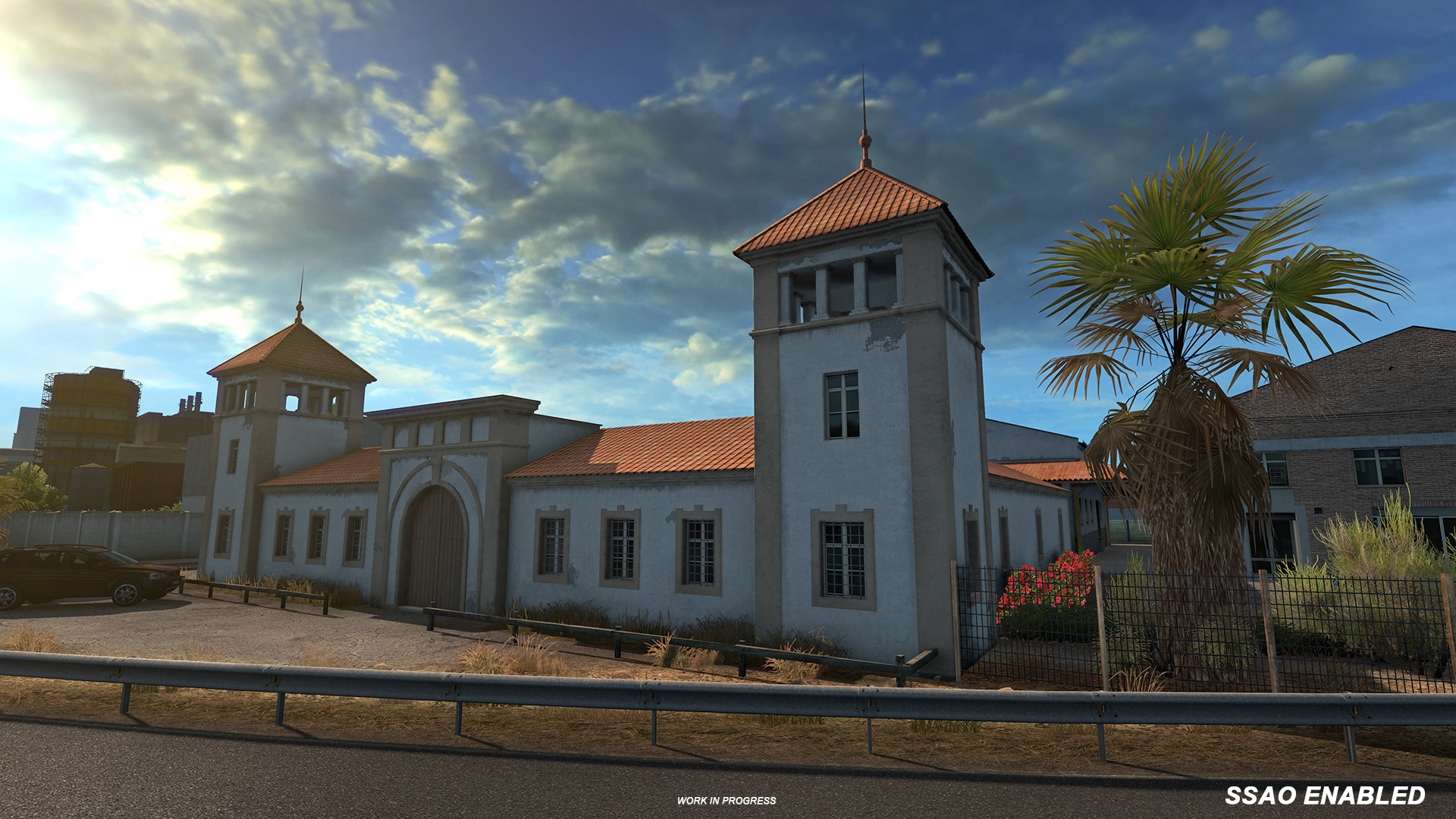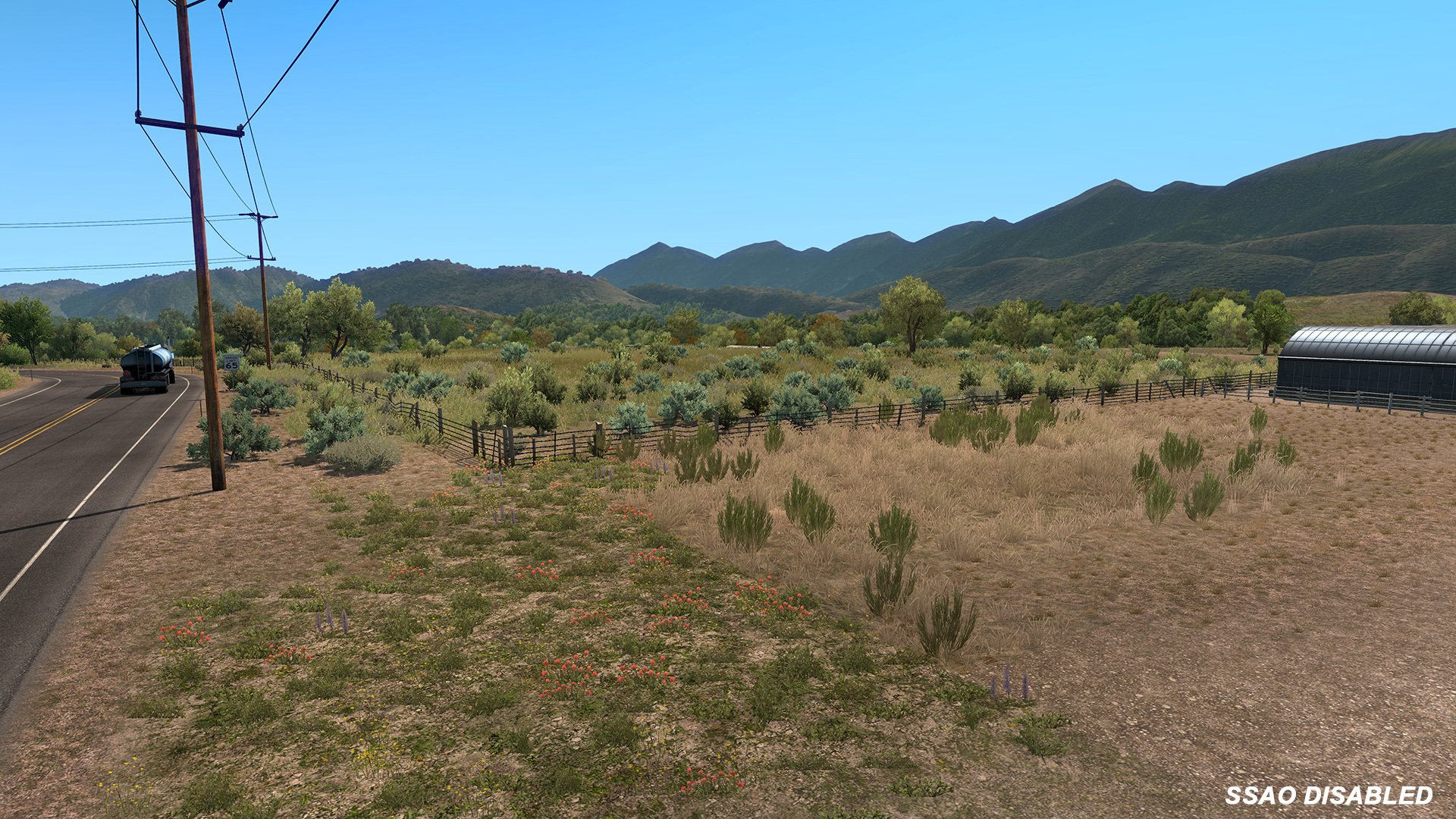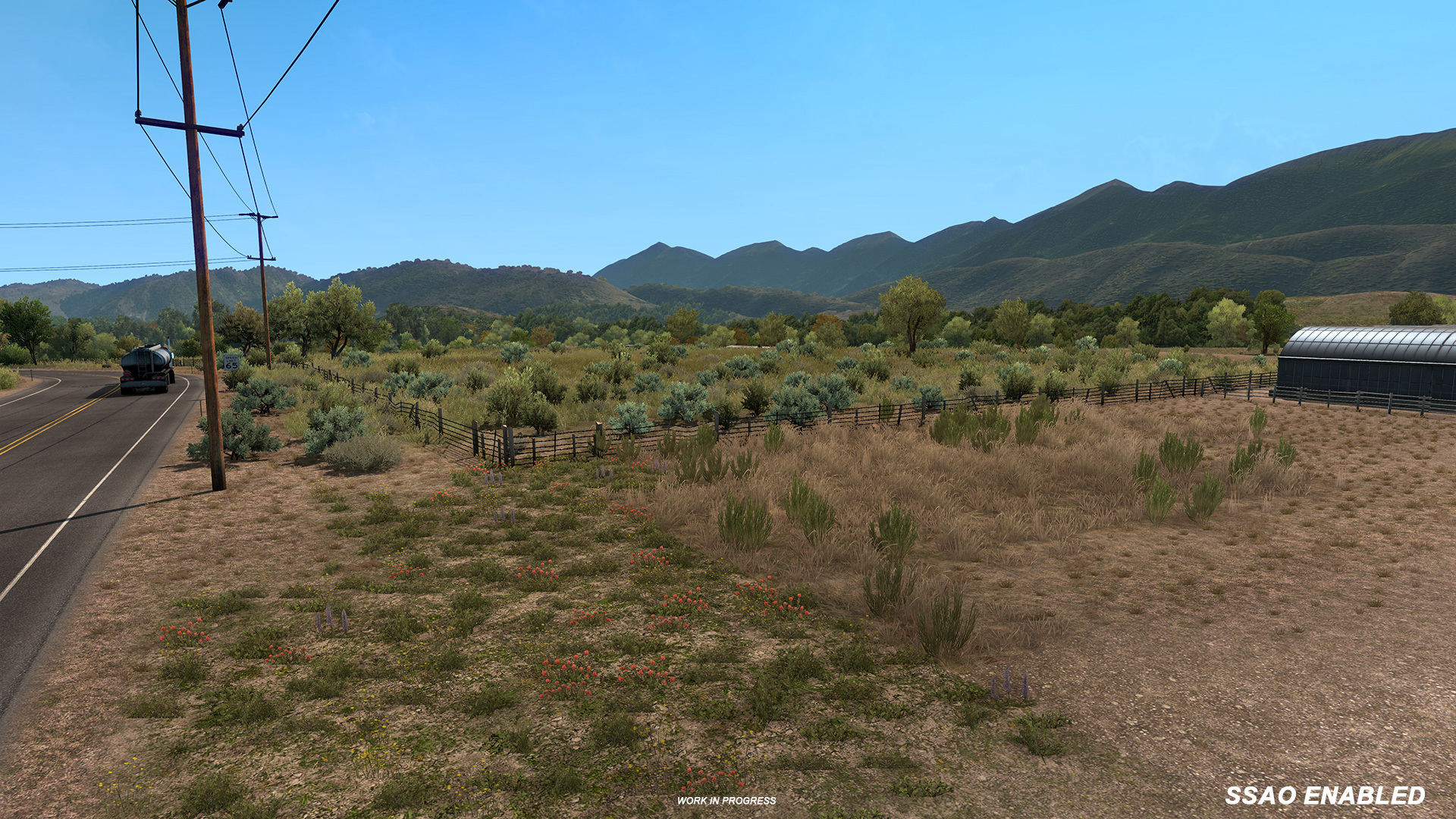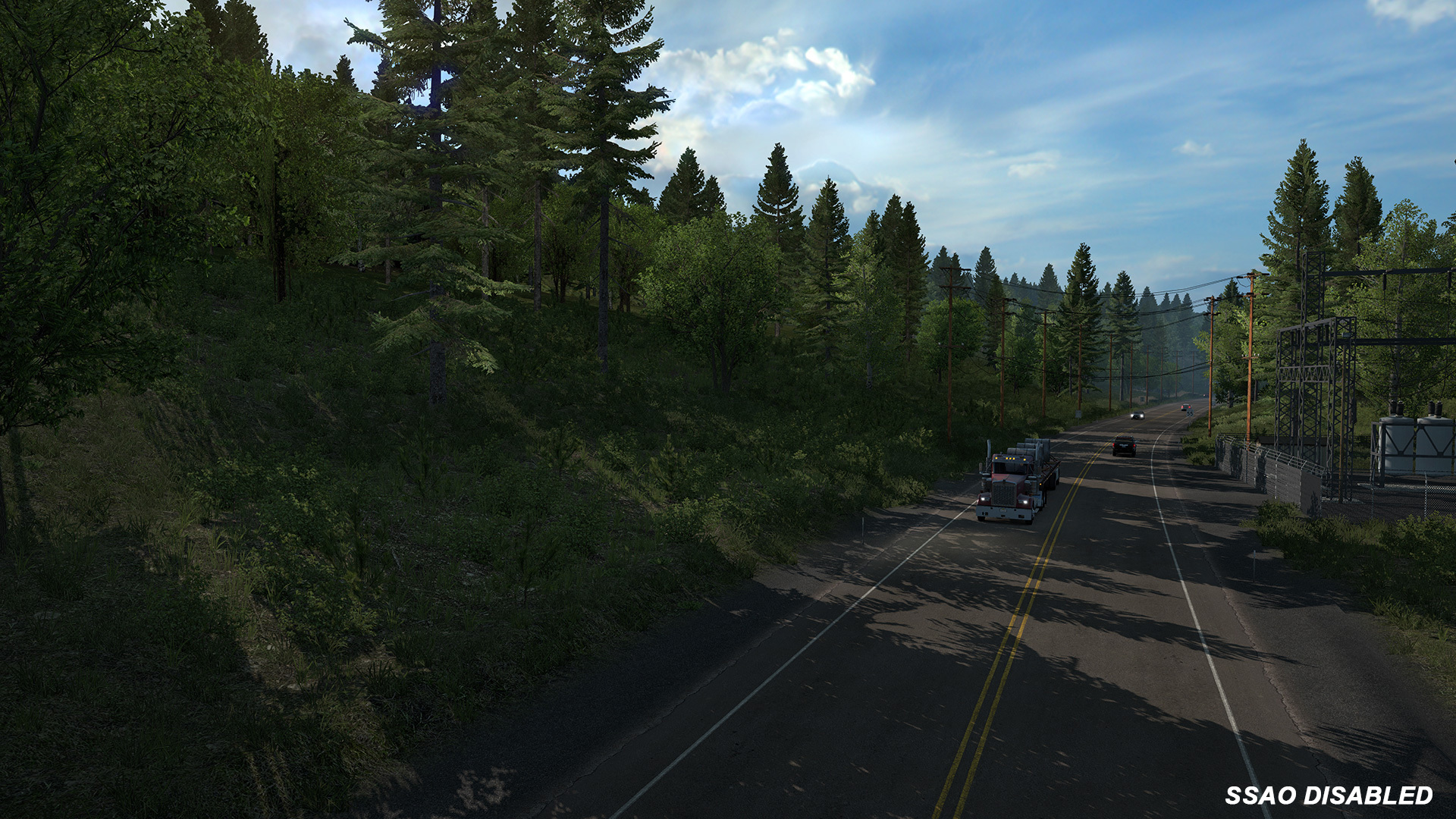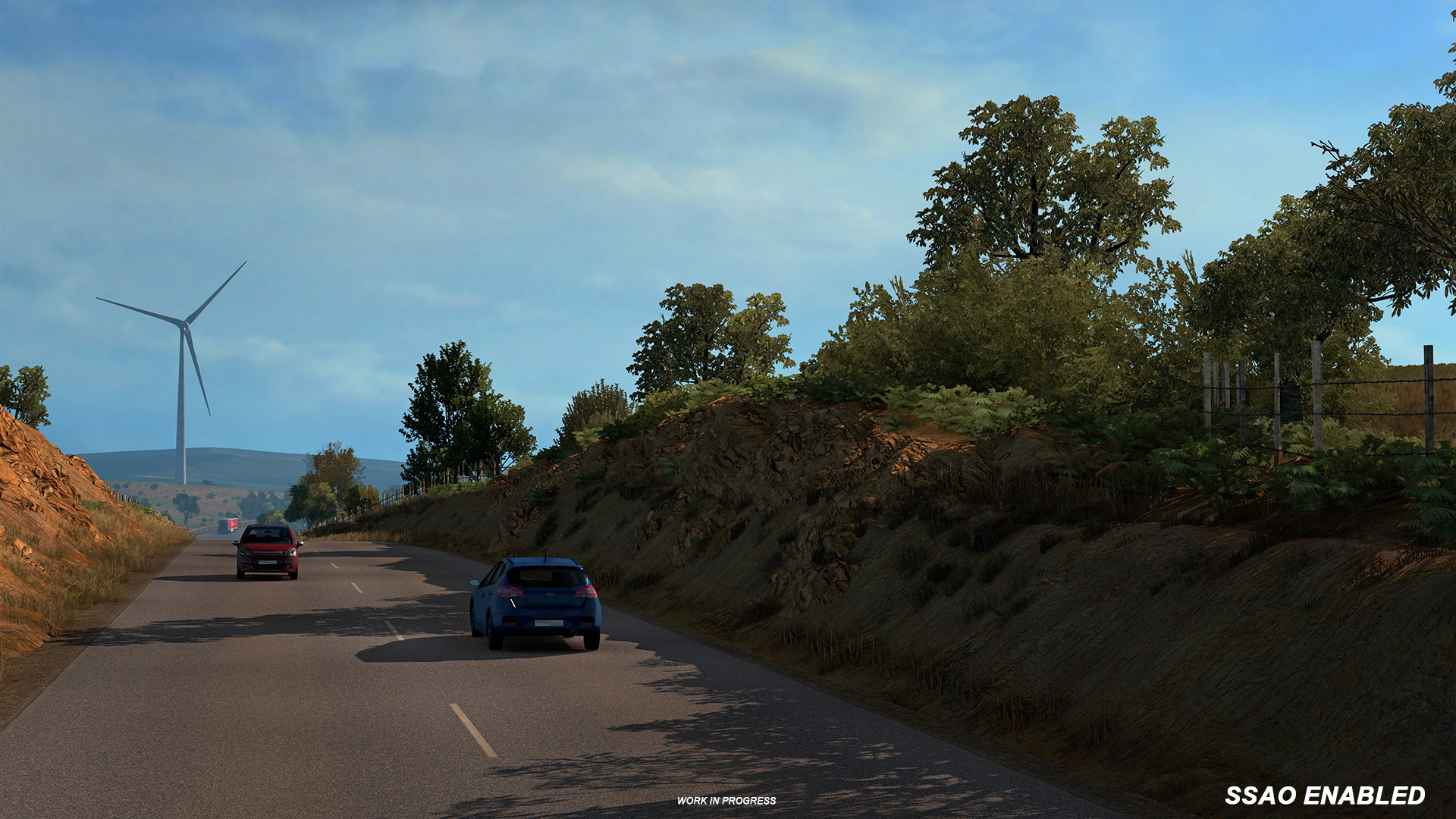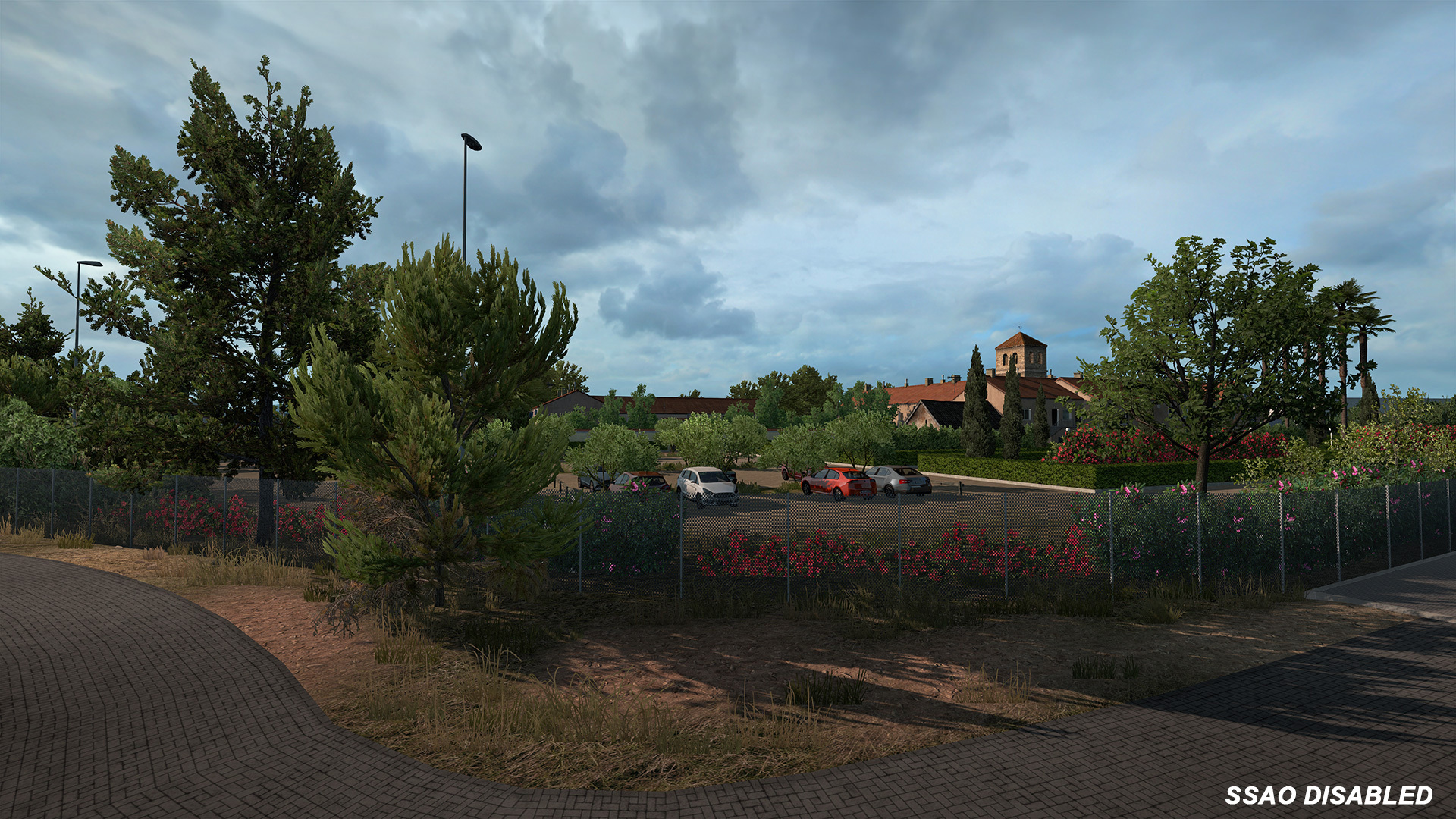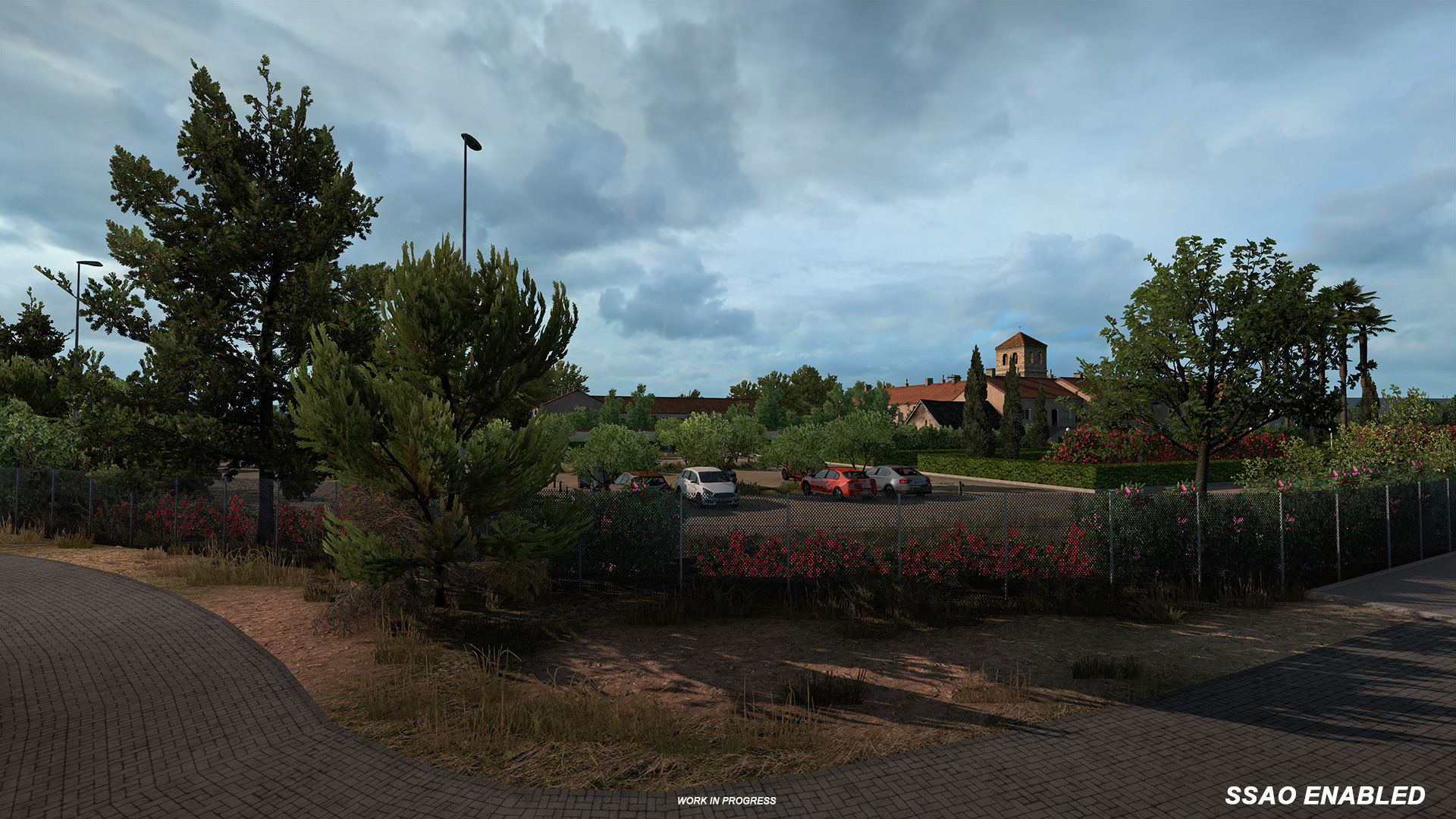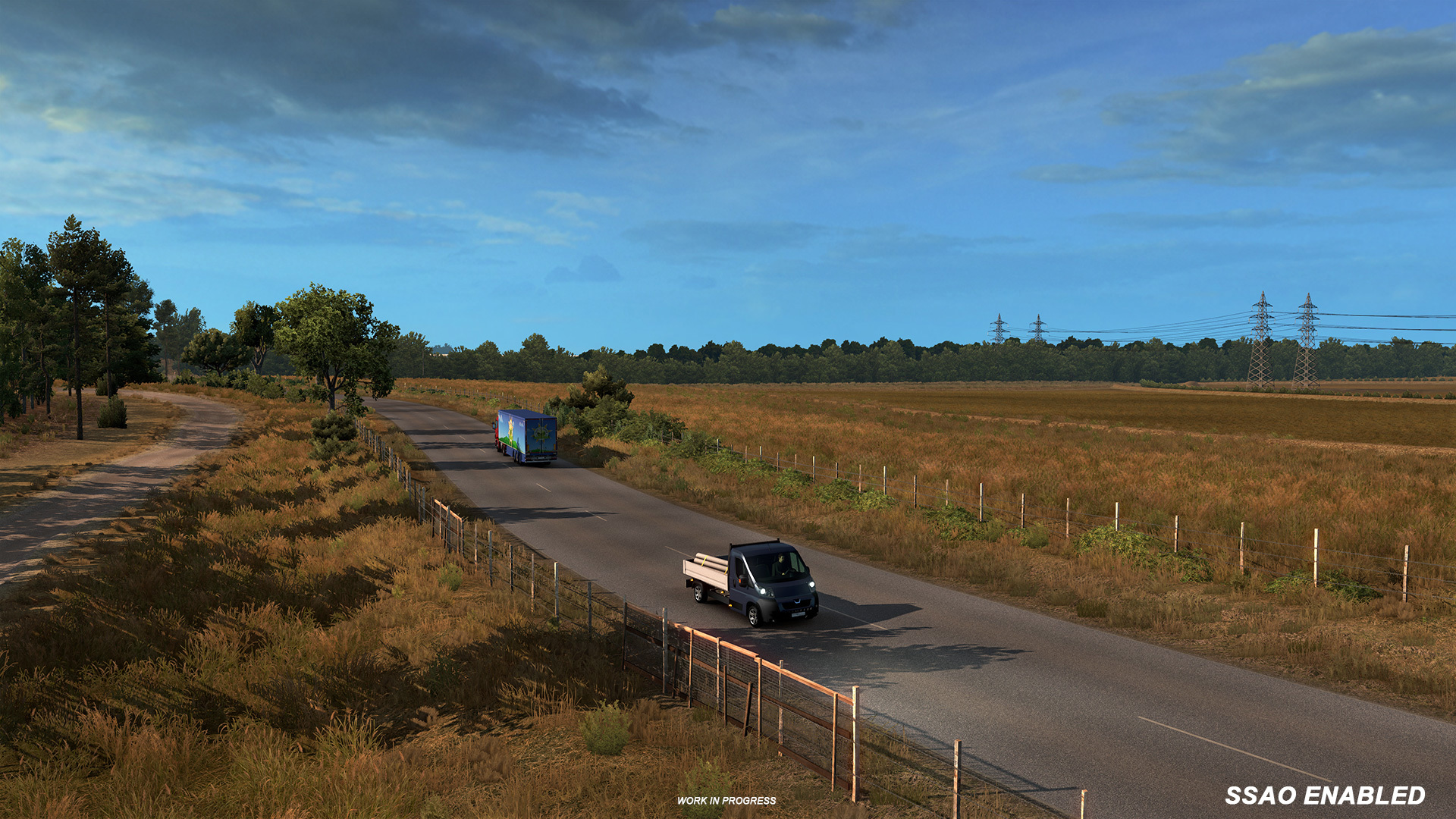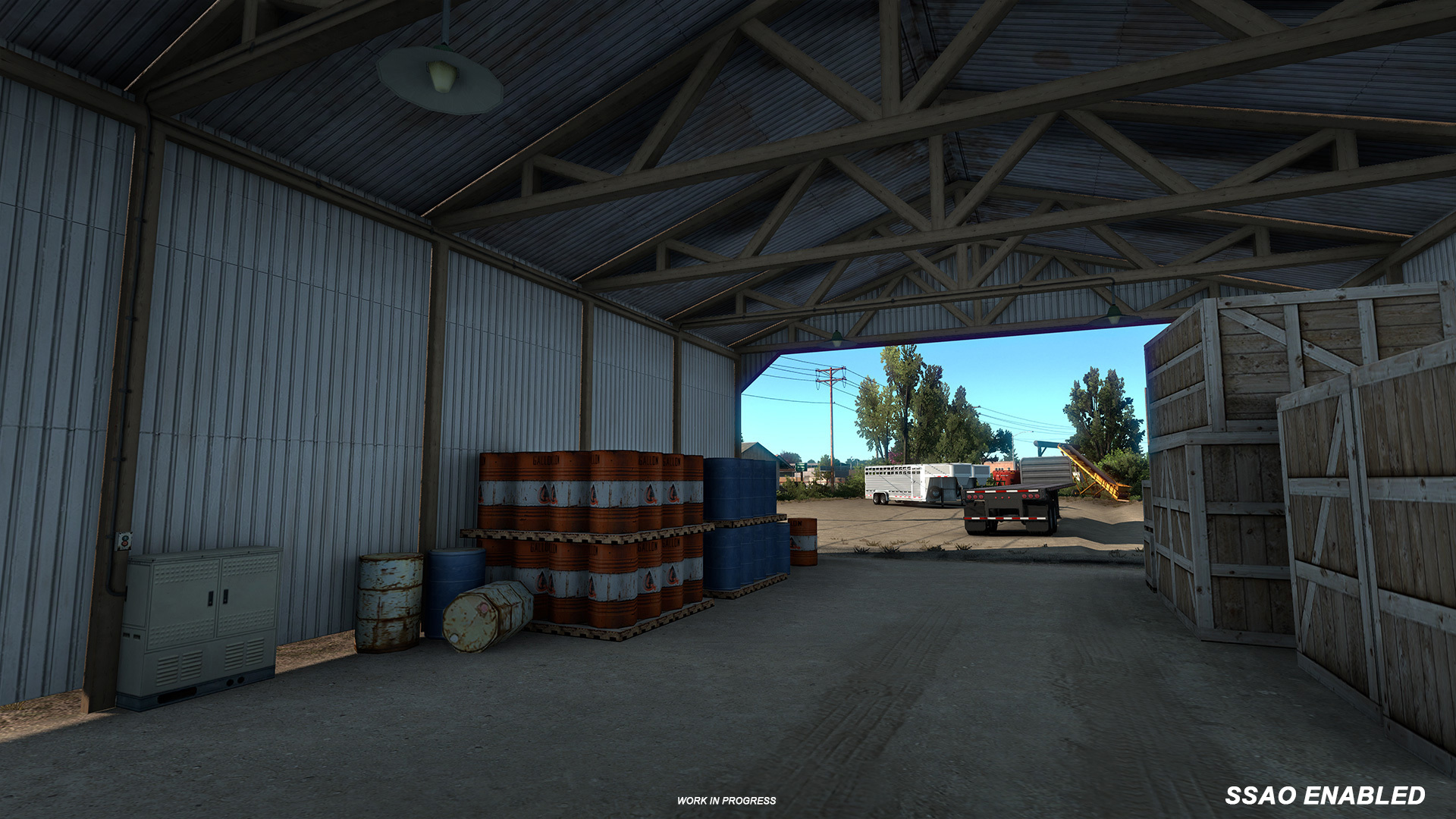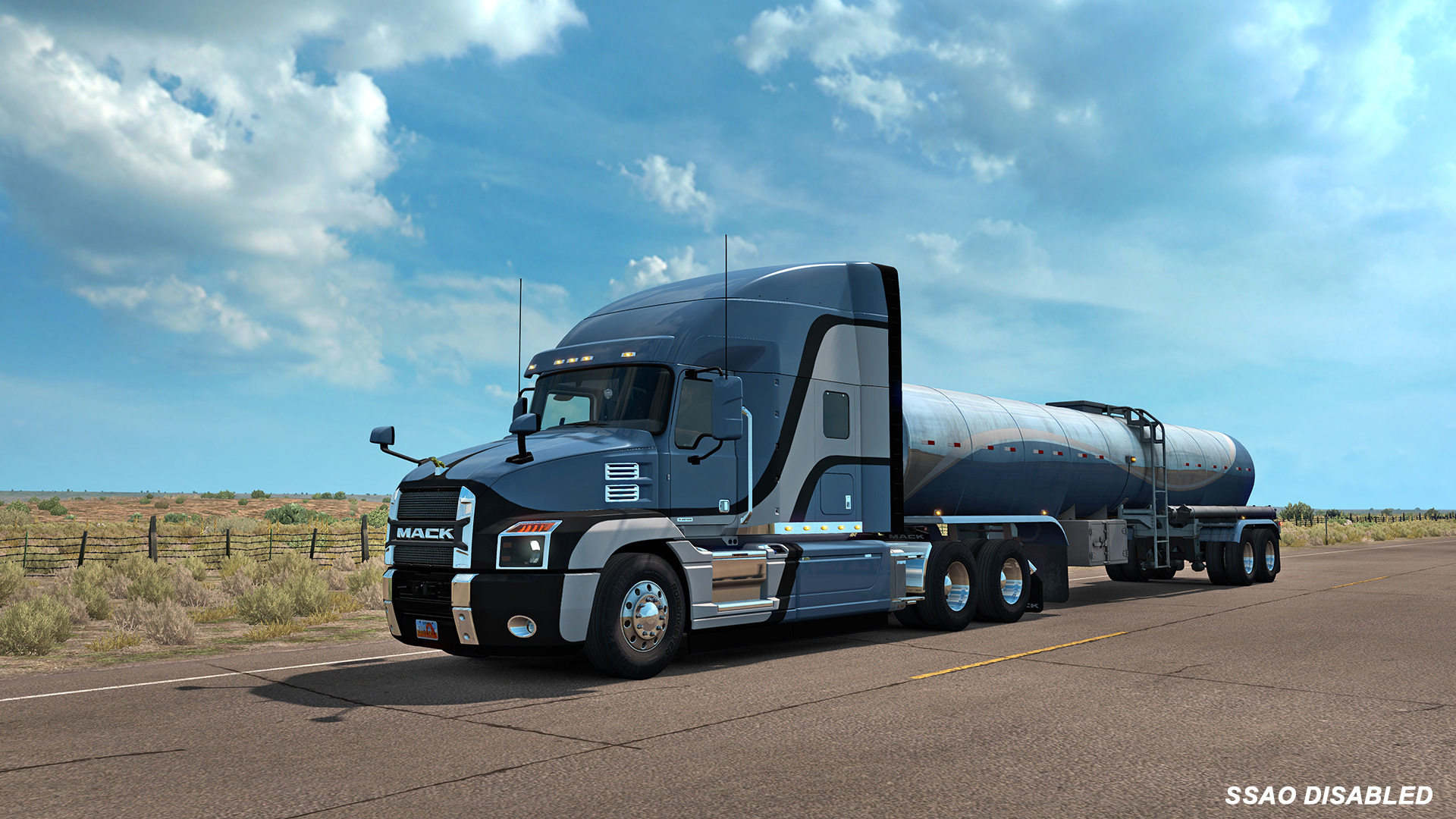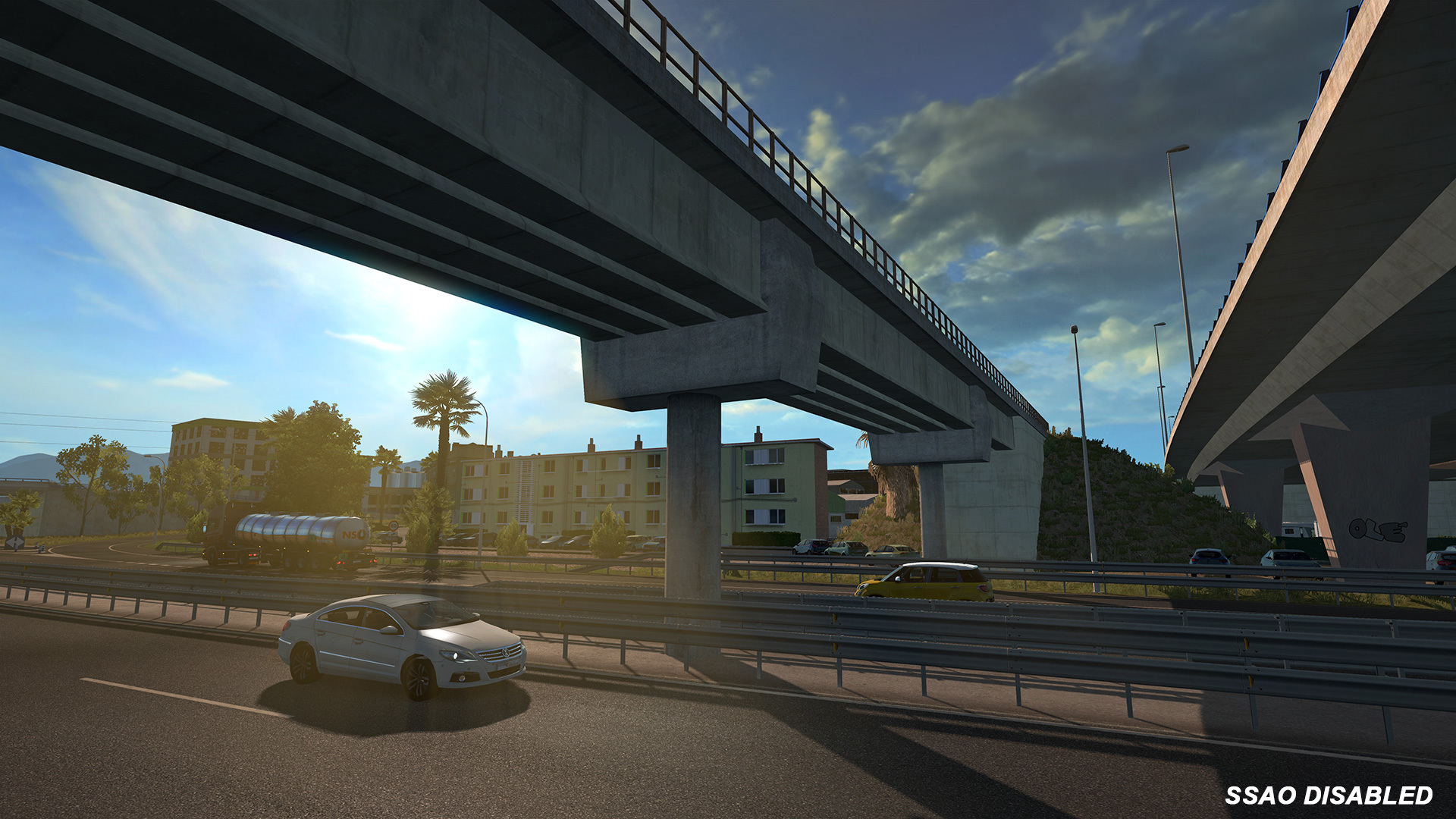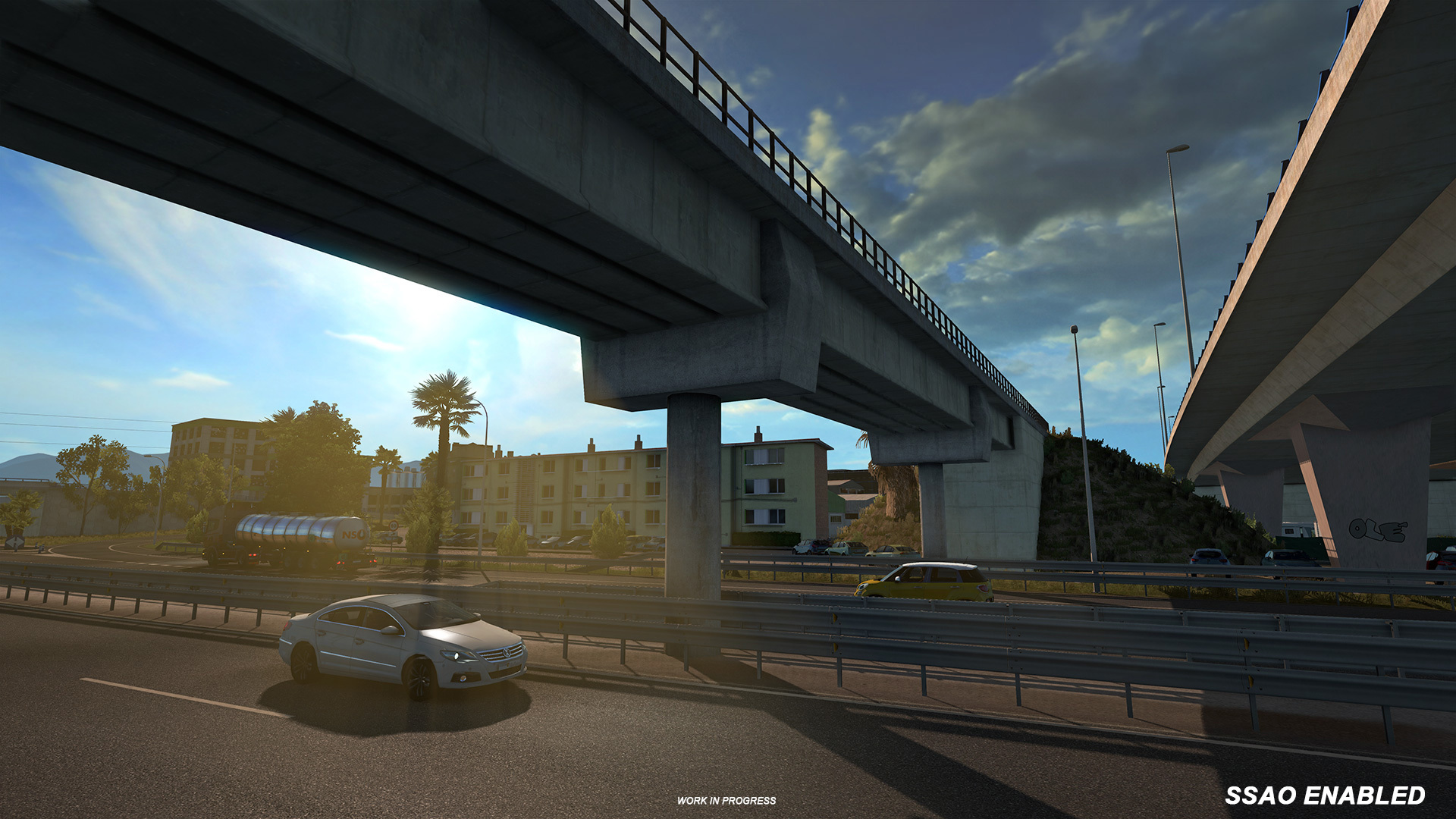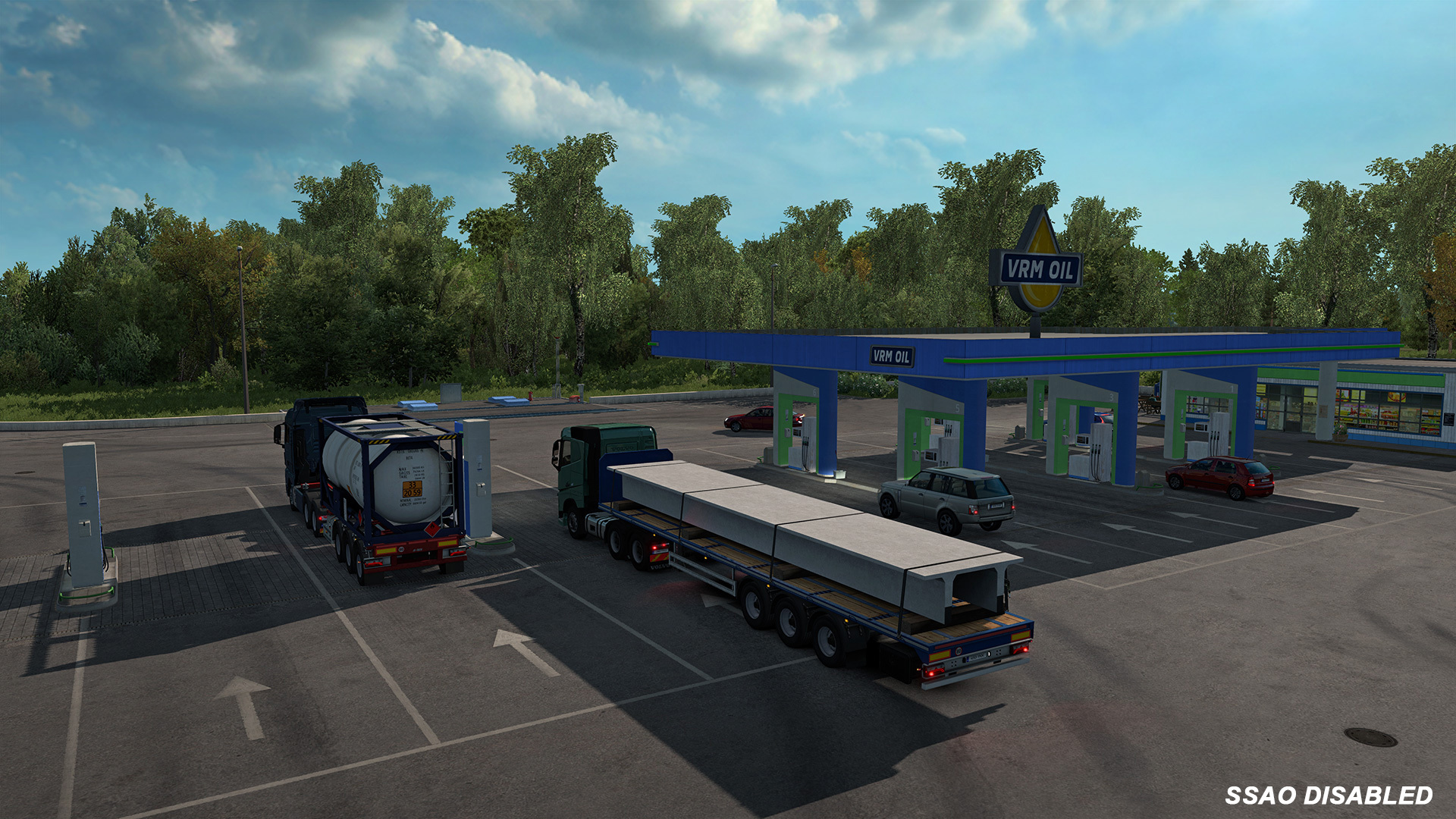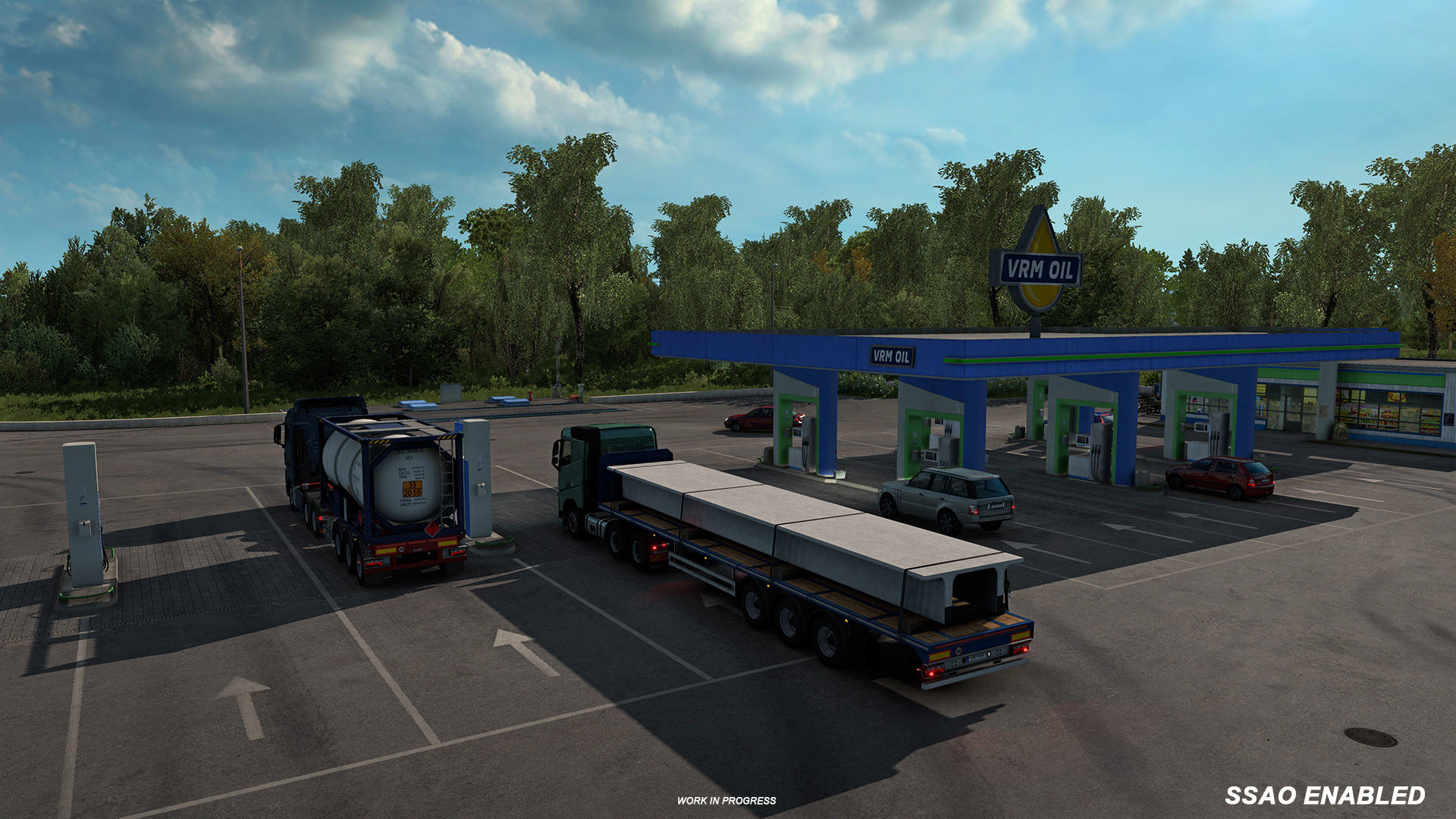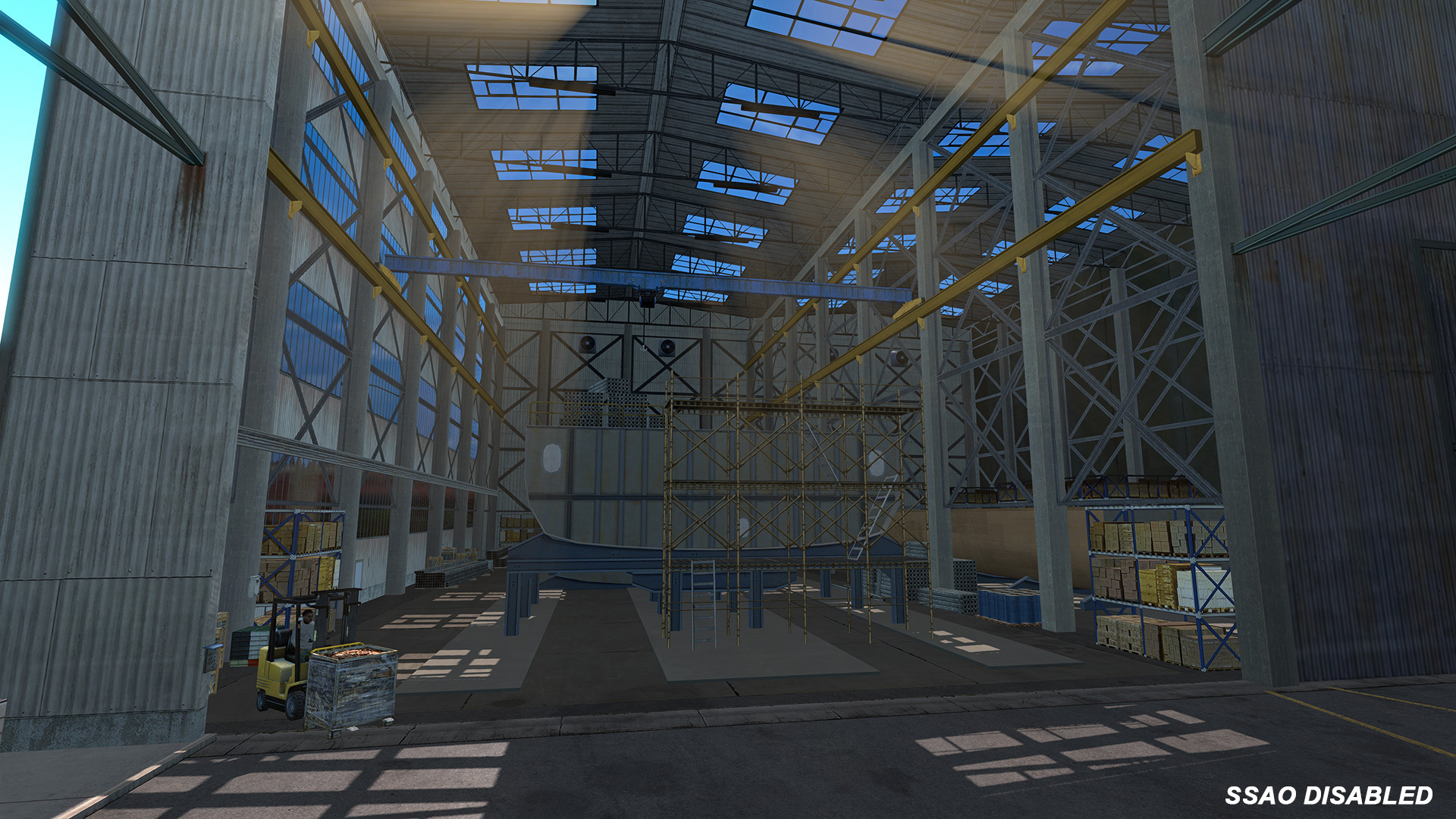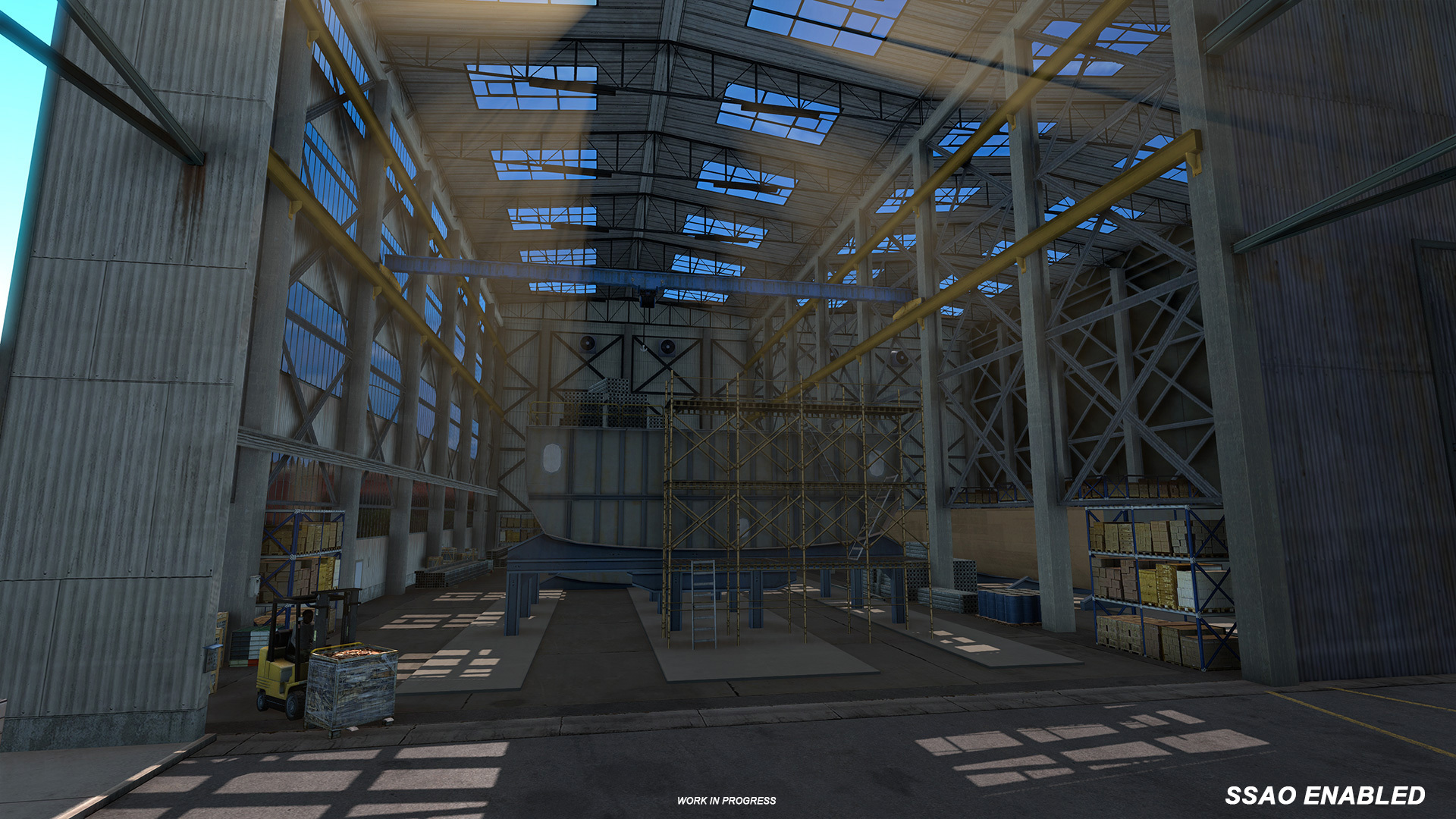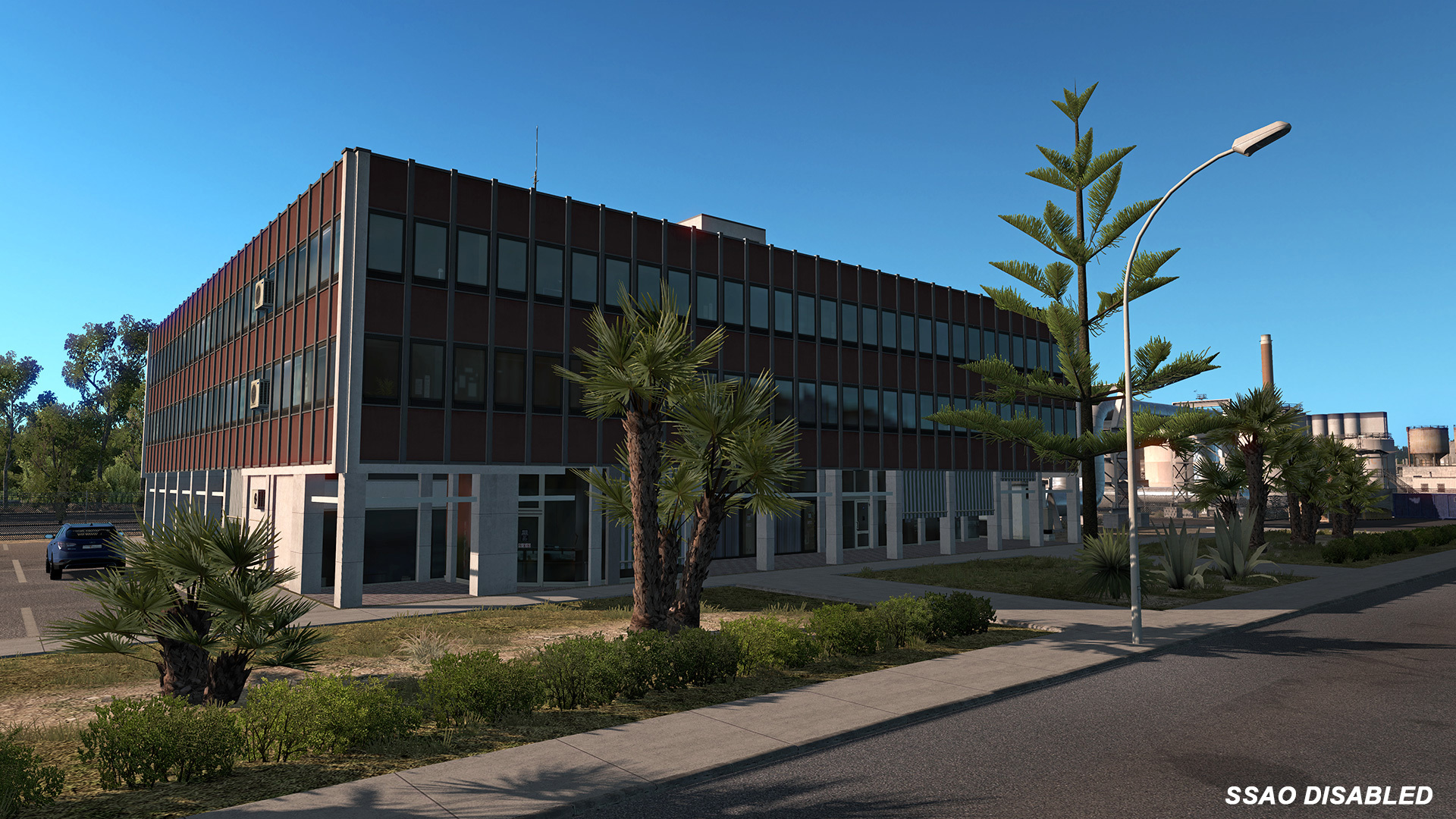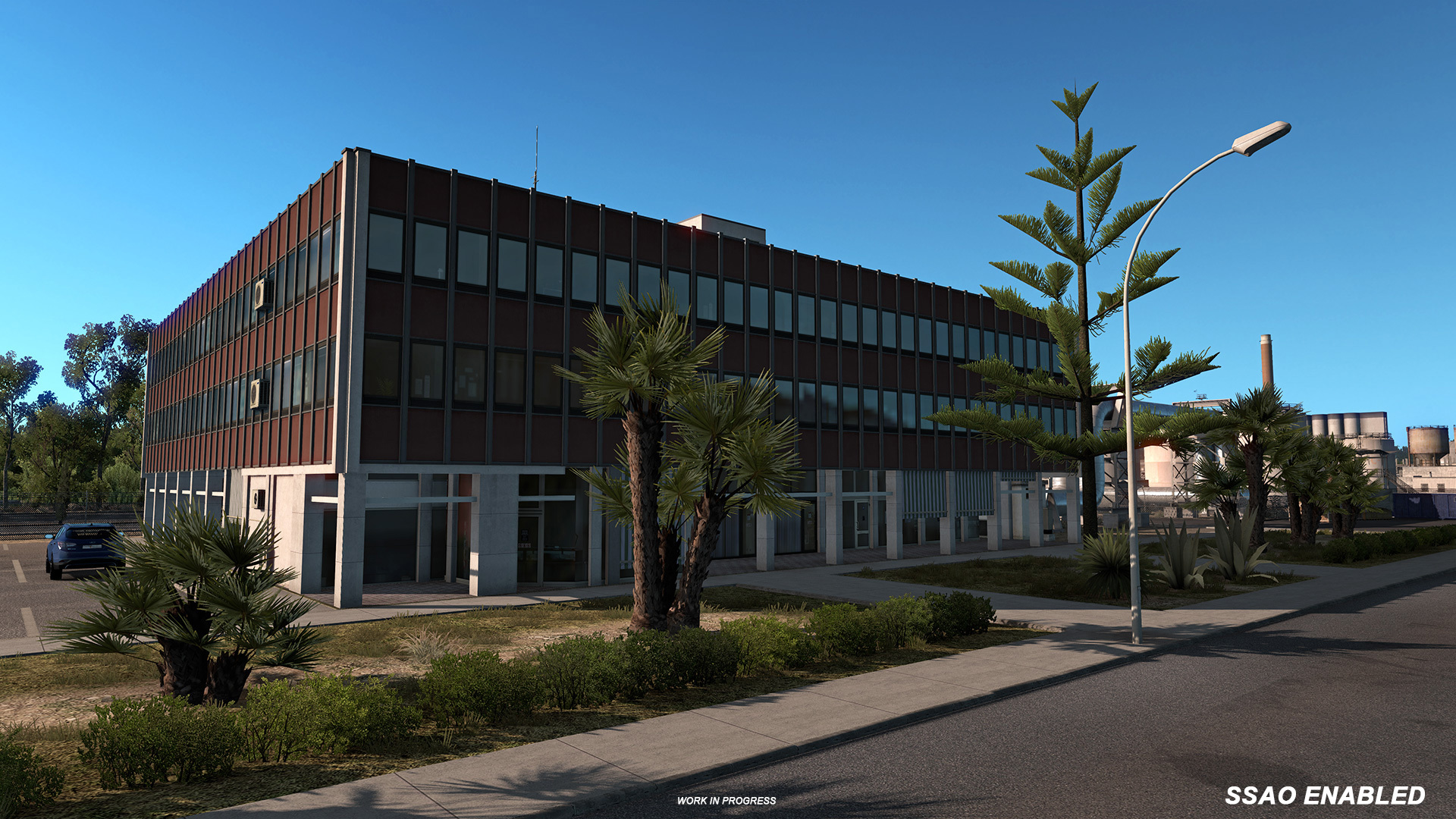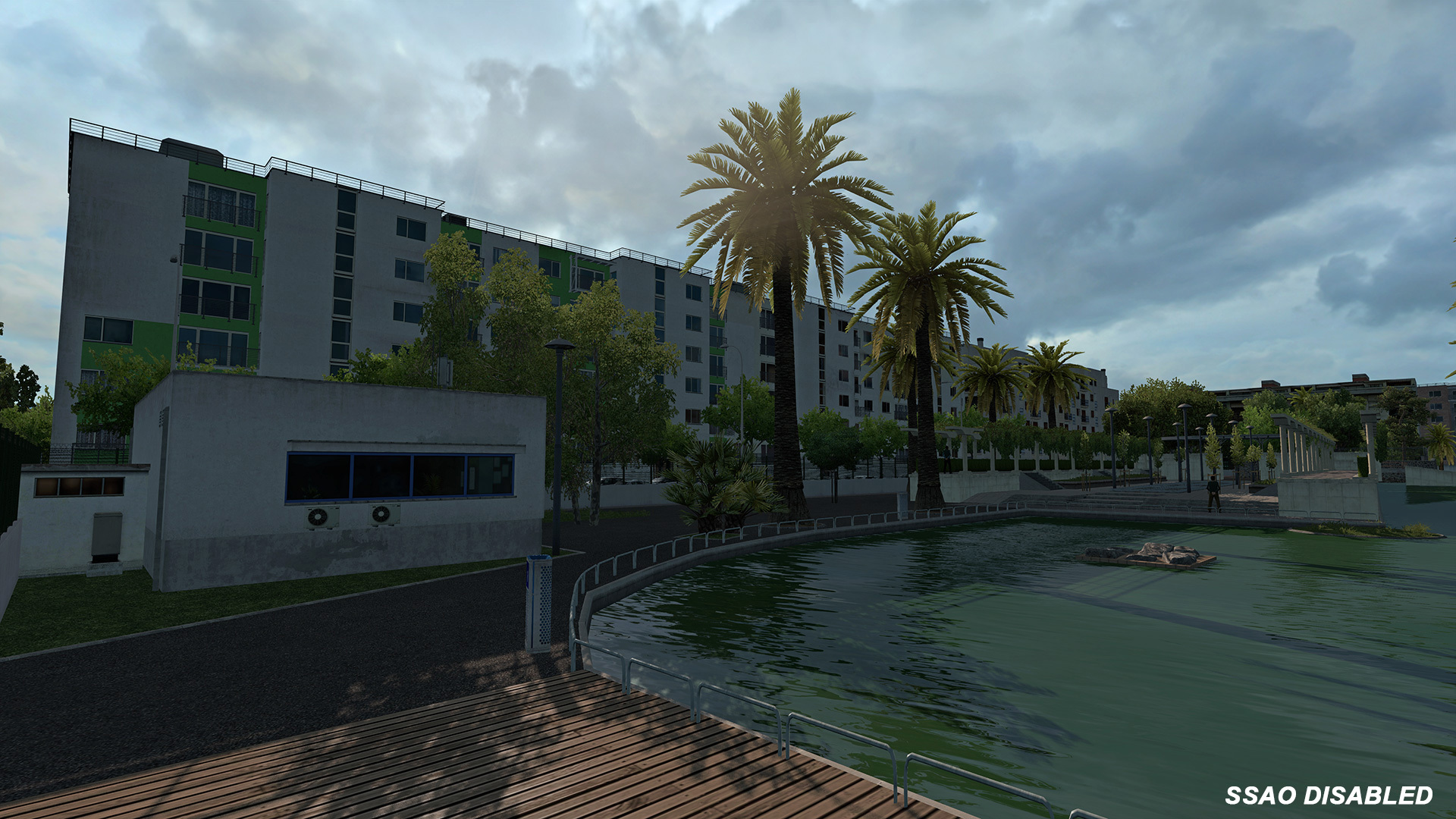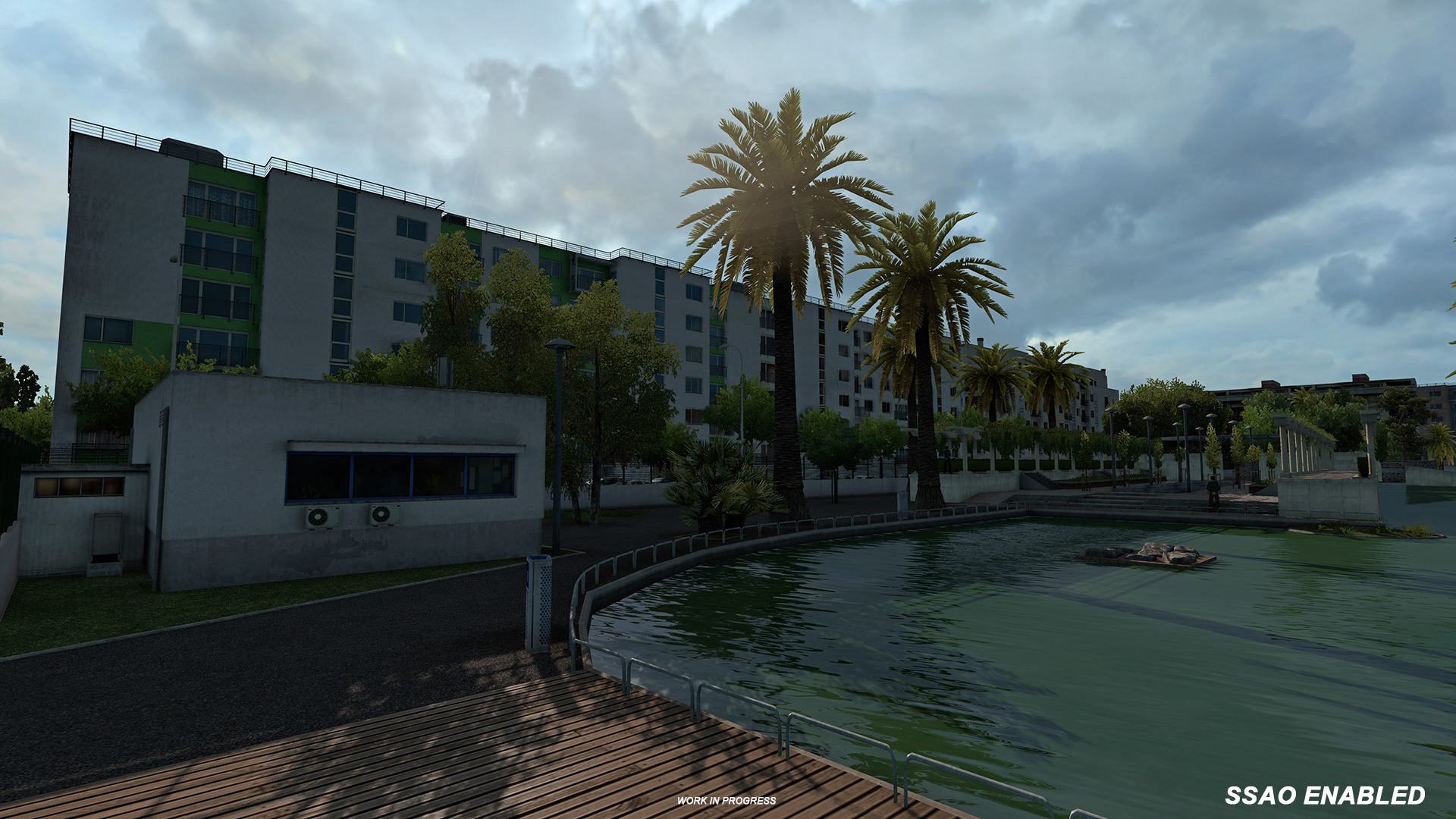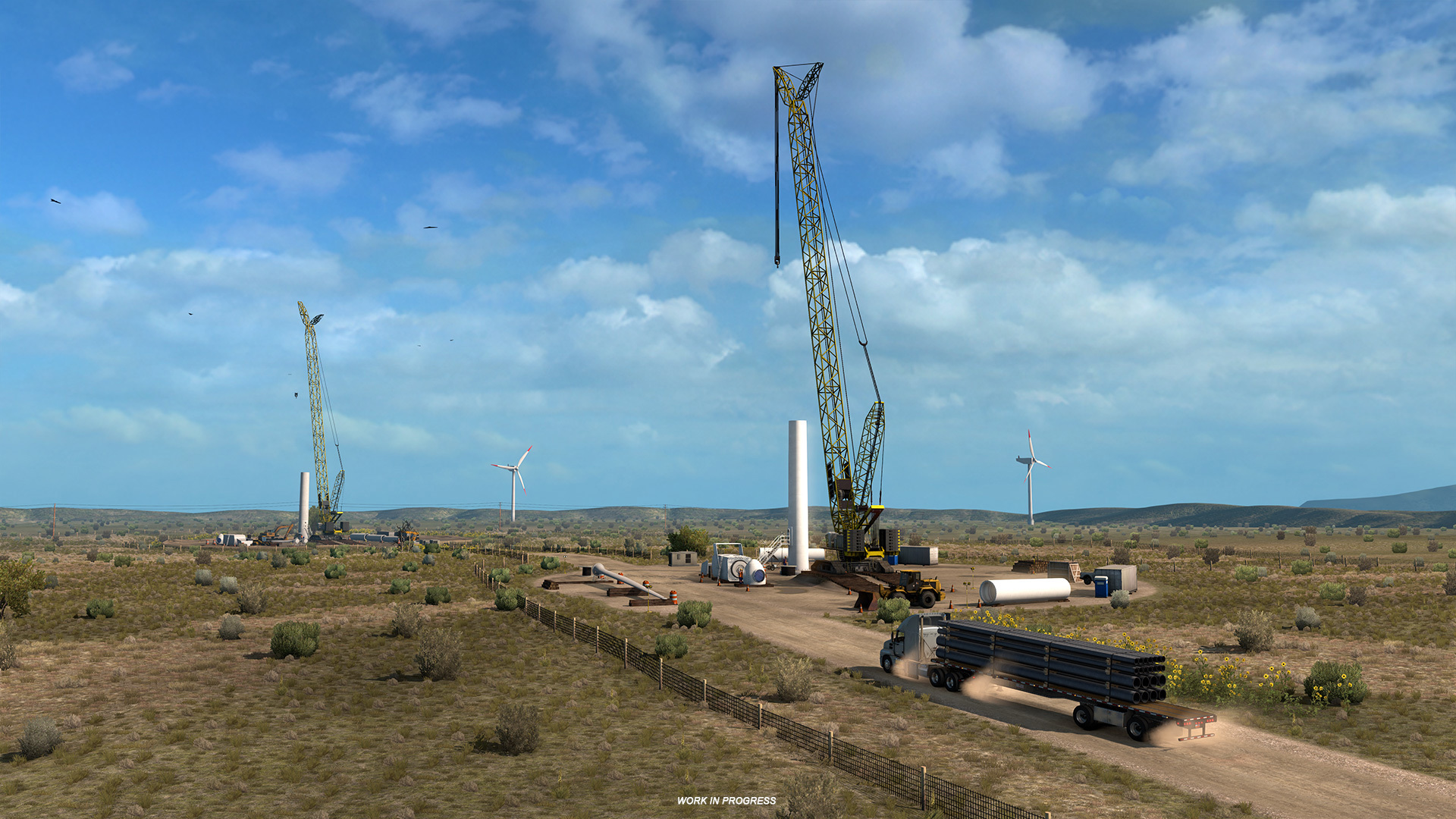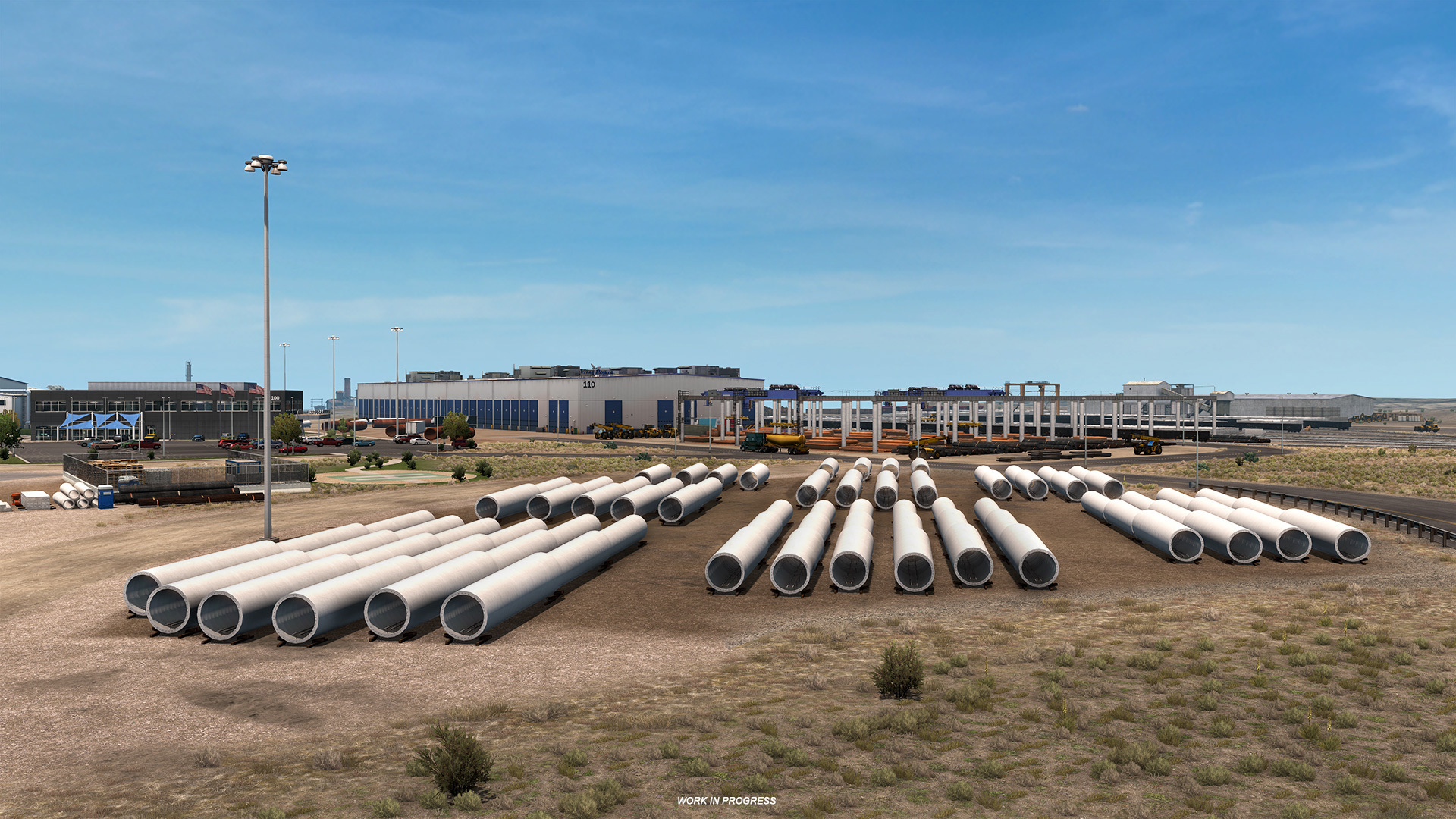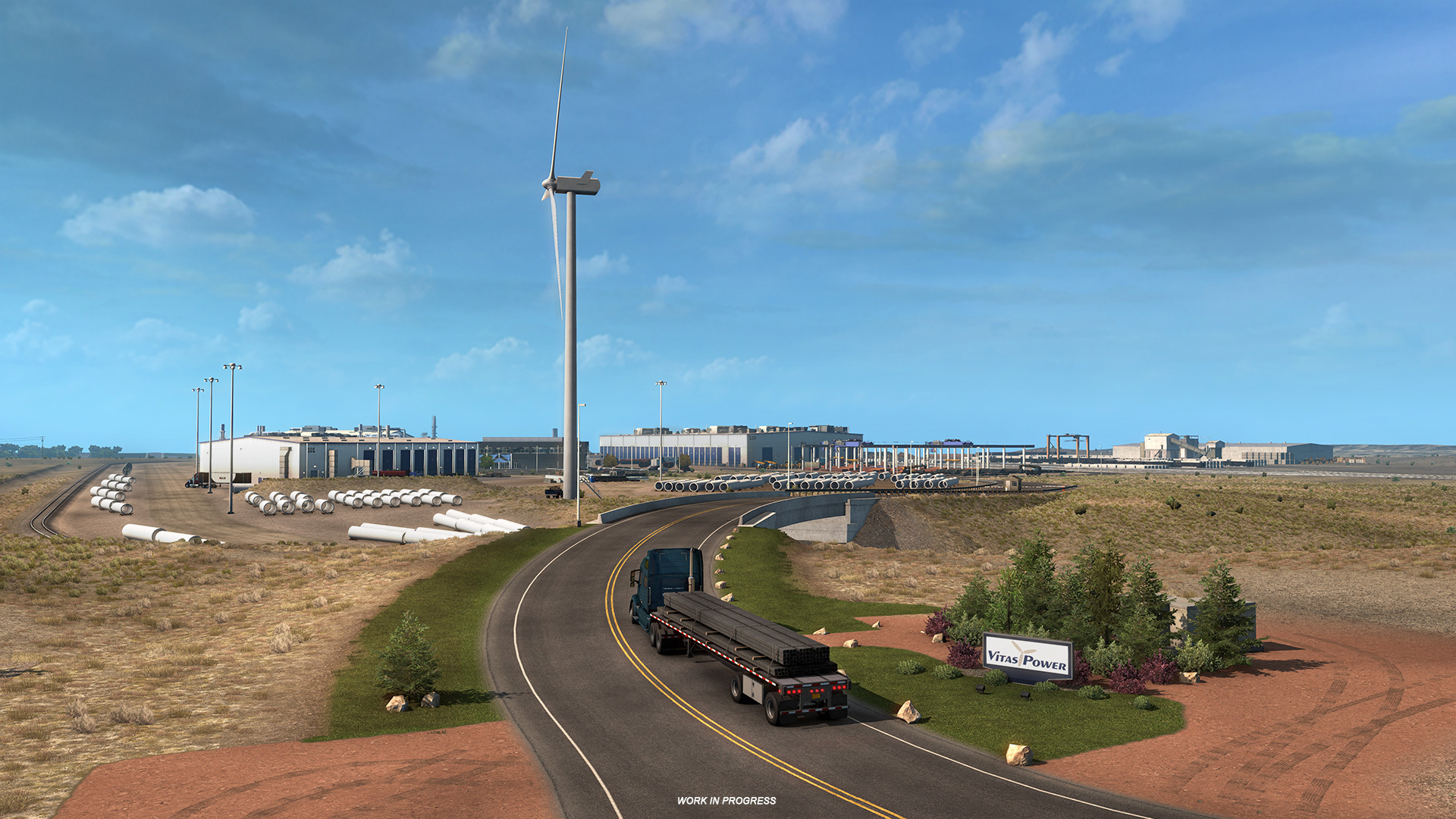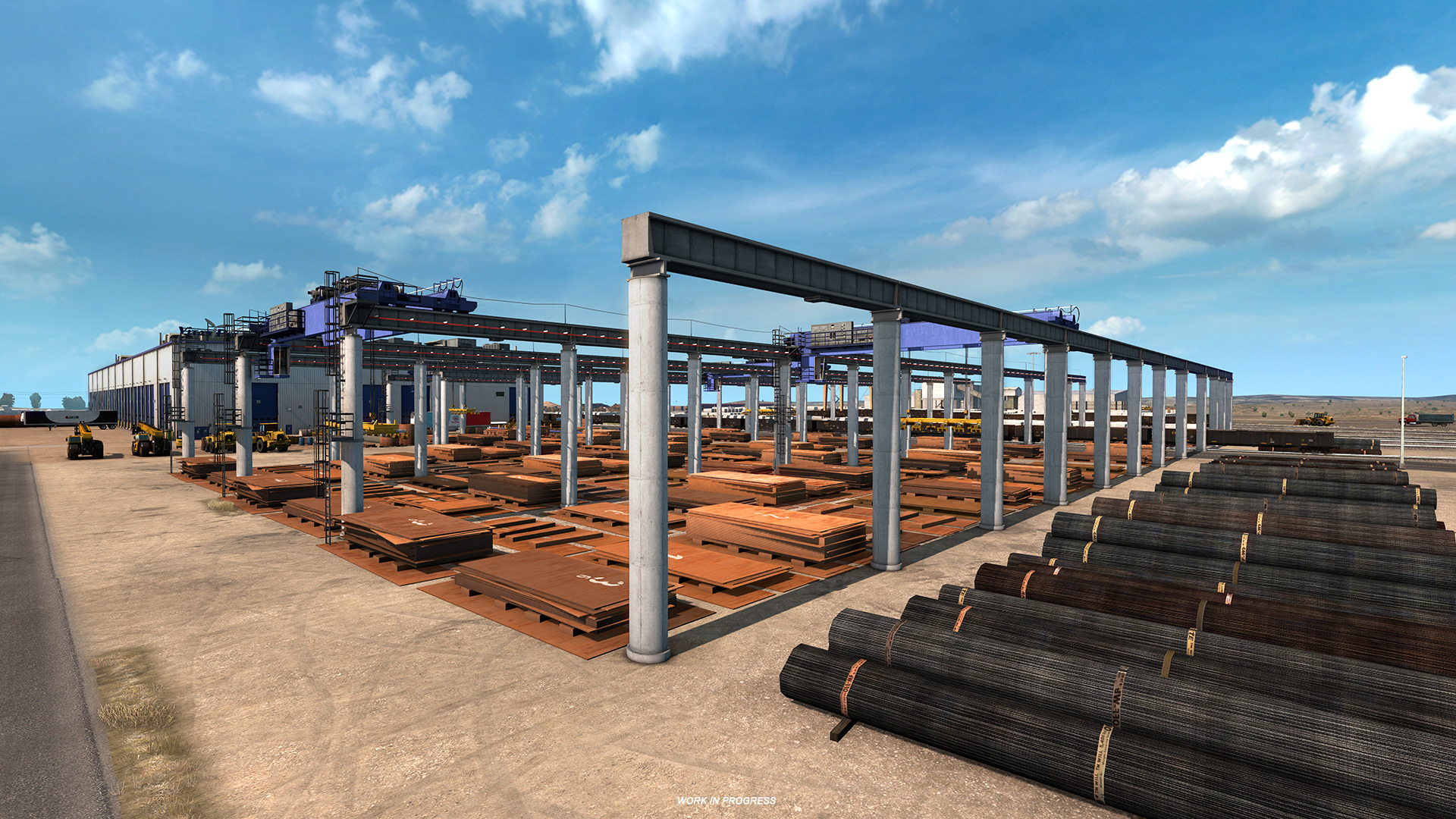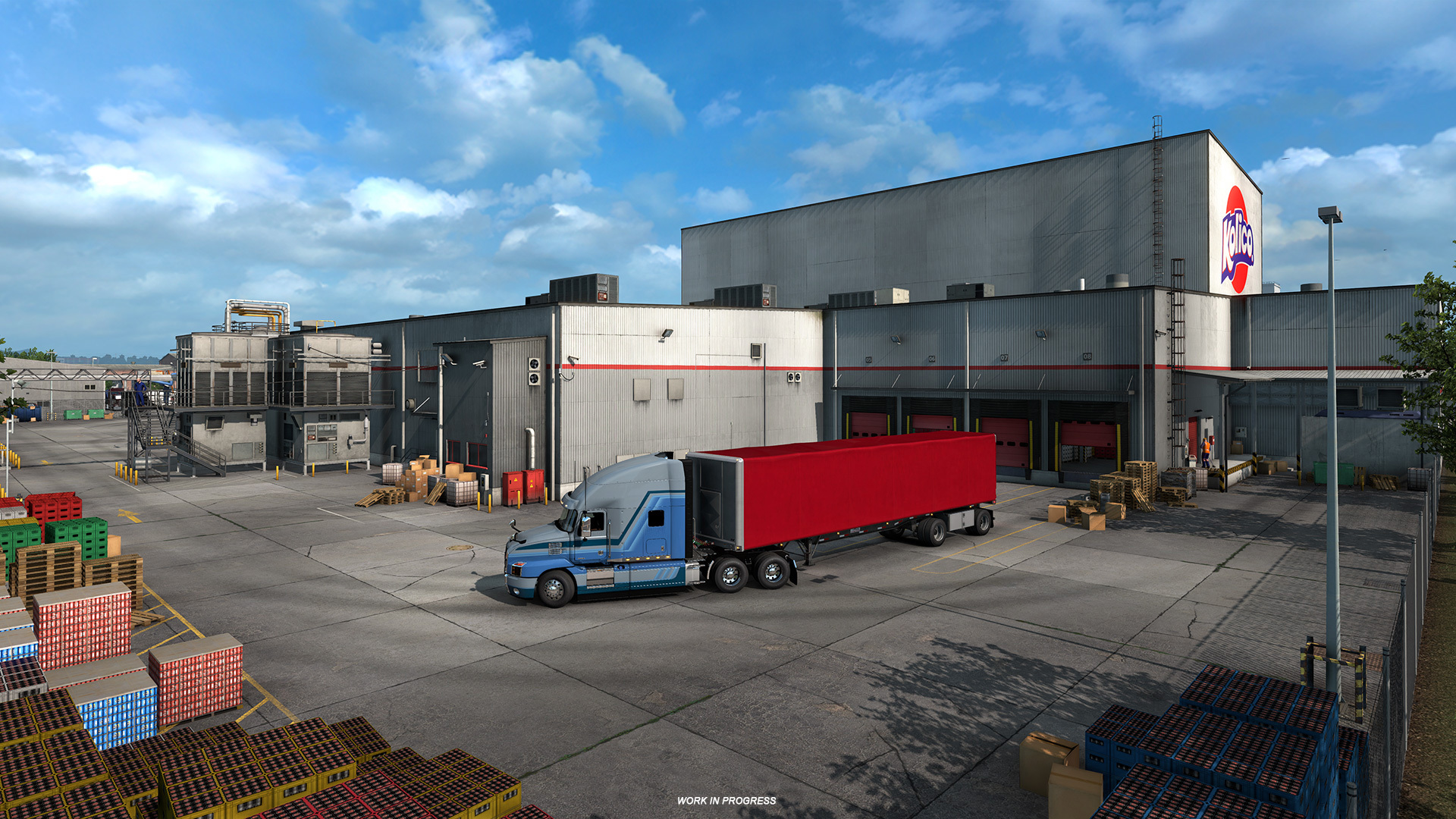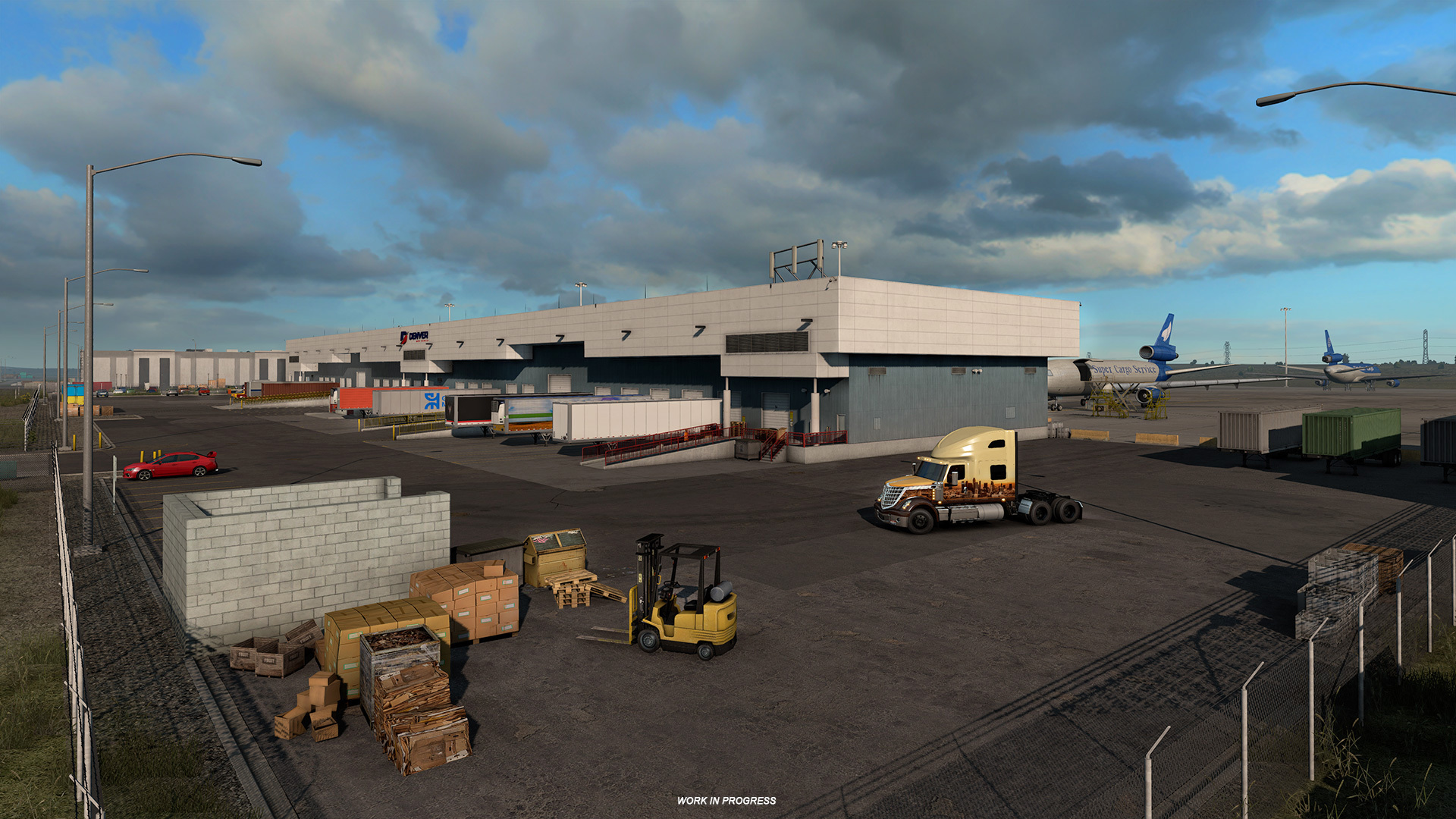American Truck Simulator 1.38 Release
With Idaho's release just around the corner and with lots of testing, feedback, fixing and fine-tuning, we are excited to announce the arrival of update the 1.38 for American Truck Simulator!

We'd like to thank all those who took part in your bug reports, opinions, and general feedback. We hope you can now begin to fully enjoy the various new features which are included within this update. So, what can you expect to find in the 1.38 update ATS? Lets us give you a quick recap of the most significant changes.
[previewyoutube][/previewyoutube]
First off, the city of Las Vegas has received a major revamp, which includes new road networks, updates to existing interstate junctions, more detailed scenery, and the inclusion of newer vegetation, terrain textures, and much more!
You can find a more in-depth blog post on the subject which showcases many of the changes found in and around the city. But the best way to see it all is to see the city for yourself! So be sure to make that trip to Nevada and let us know what you think through our social media channels.
Las Vegas isn't the only part of the American Truck Simulator world to receive an update in 1.38, one of the more noticeable changes are to Truckstops. One of the first changes you will notice at Truckstops in ATS is that fuel stations now have lanes with appropriate width for trucks to pull up and refuel in. We have also implemented (where possible) guidance lines to help drivers line up their trucks to avoid damaging their vehicles upon entry and exit. Plus there is a completely new truck stop placed on the US-111 road now!
We are also excited to introduce the inclusion of a computer graphics technique for efficiently approximating ambient occlusion effects in real-time. Screen Space Ambient Occlusion, better known in its shorter form SSAO, creates shadows in the areas where objects connect, to give it a more natural and believable look in terms of lighting and shadows.
Less powerful GPUs may struggle to keep up at full quality, and with 400% or similarly high scaling selected, even mid-range machines would feel the impact on fps. If you are not happy with framerate after this update, please open the advanced graphics options in the game and try to find the right combination of scaling and SSAO quality for you. With a weaker GPU, it may be advisable to switch off SSAO completely.
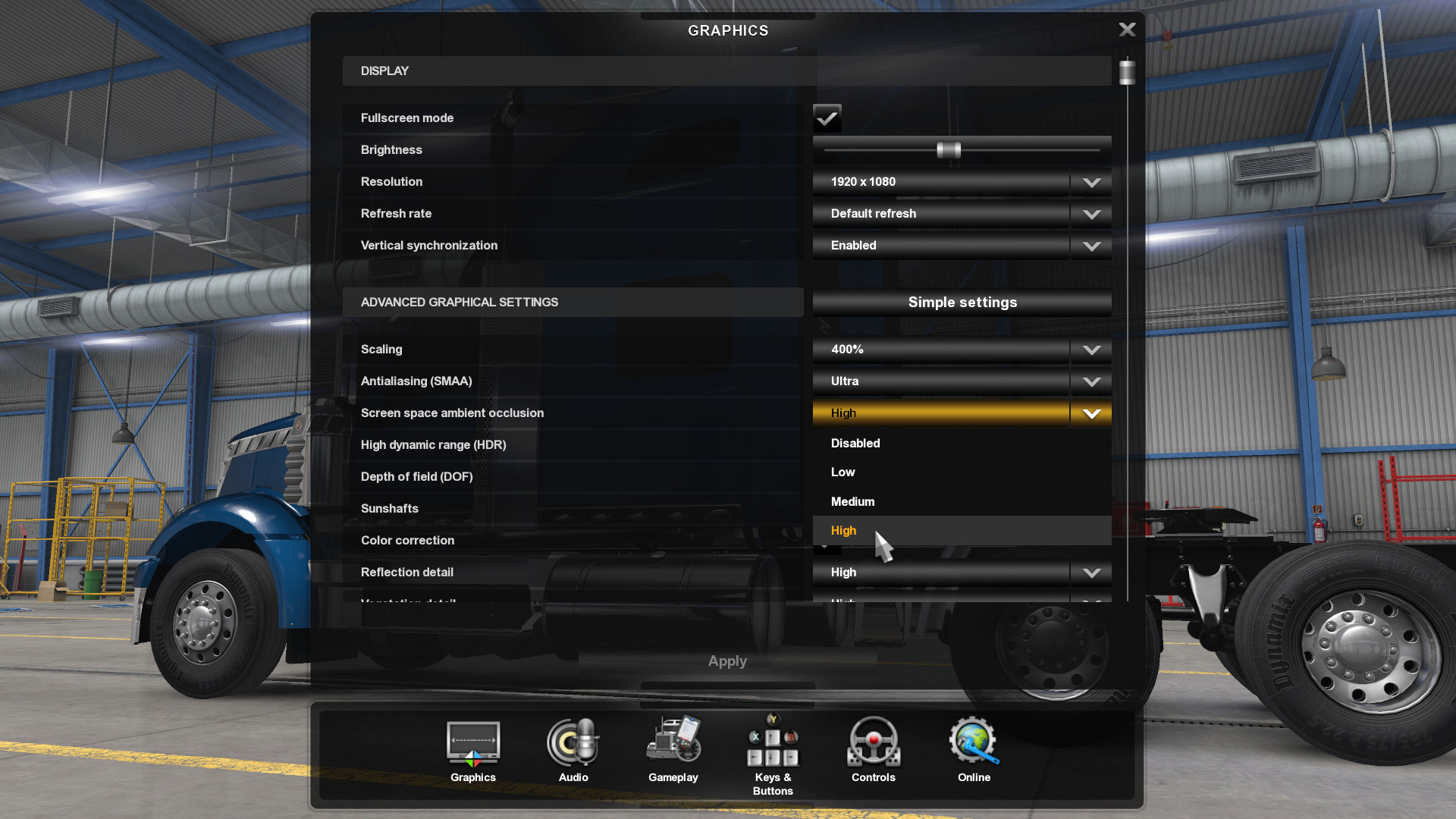
This new feature can be better explained by one of our senior programmers, be sure to read a more in-depth post about the topic at our Under the Hood blog post here
We are also excited to introduce a long-requested update to the RGB Color Picker which drivers use to paint their trucks when purchasing or tuning their truck. You now have the option to input specific color inputs (HSV, RGB, and HEX).
We know that many drivers like to match their truck colors the same across their whole fleet, so we hope this feature is useful to you.

There is much more packed into this update! If you would like a more in-depth read of other features included in this update, take a read of our previous blogpost for the 1.38 Open Beta.
MAP
VEHICLES
FEATURES
SOUND
To enjoy the 1.38 update, make sure to OPT OUT of beta branches and your game will be automatically updated on Steam.
Some mods, however, may have not caught up yet - this update may effectively break them. So remember that you can always stay on 1.37 or an even older branch. The way to access and select them is: Steam client → LIBRARY → right-click on American Truck Simulator → Properties → Betas tab → select the version you want.

We'd like to thank all those who took part in your bug reports, opinions, and general feedback. We hope you can now begin to fully enjoy the various new features which are included within this update. So, what can you expect to find in the 1.38 update ATS? Lets us give you a quick recap of the most significant changes.
[previewyoutube][/previewyoutube]
First off, the city of Las Vegas has received a major revamp, which includes new road networks, updates to existing interstate junctions, more detailed scenery, and the inclusion of newer vegetation, terrain textures, and much more!
You can find a more in-depth blog post on the subject which showcases many of the changes found in and around the city. But the best way to see it all is to see the city for yourself! So be sure to make that trip to Nevada and let us know what you think through our social media channels.
Las Vegas isn't the only part of the American Truck Simulator world to receive an update in 1.38, one of the more noticeable changes are to Truckstops. One of the first changes you will notice at Truckstops in ATS is that fuel stations now have lanes with appropriate width for trucks to pull up and refuel in. We have also implemented (where possible) guidance lines to help drivers line up their trucks to avoid damaging their vehicles upon entry and exit. Plus there is a completely new truck stop placed on the US-111 road now!
We are also excited to introduce the inclusion of a computer graphics technique for efficiently approximating ambient occlusion effects in real-time. Screen Space Ambient Occlusion, better known in its shorter form SSAO, creates shadows in the areas where objects connect, to give it a more natural and believable look in terms of lighting and shadows.
Less powerful GPUs may struggle to keep up at full quality, and with 400% or similarly high scaling selected, even mid-range machines would feel the impact on fps. If you are not happy with framerate after this update, please open the advanced graphics options in the game and try to find the right combination of scaling and SSAO quality for you. With a weaker GPU, it may be advisable to switch off SSAO completely.

This new feature can be better explained by one of our senior programmers, be sure to read a more in-depth post about the topic at our Under the Hood blog post here
We are also excited to introduce a long-requested update to the RGB Color Picker which drivers use to paint their trucks when purchasing or tuning their truck. You now have the option to input specific color inputs (HSV, RGB, and HEX).
We know that many drivers like to match their truck colors the same across their whole fleet, so we hope this feature is useful to you.

There is much more packed into this update! If you would like a more in-depth read of other features included in this update, take a read of our previous blogpost for the 1.38 Open Beta.
MAP
- Las Vegas city revamped (I-515/I-11 interstate bypass + the whole city switched to the template road system)
- US-191 road implemented
- UT-56 road implemented + reskin of a little stretch of US-93 around Panaca settlement
- CA-111 - new truckstop added
- El Centro revamped
- New company in Logan, UT (Plaster & Sons)
- Reworked all truck stop gas pumps to be more realistic. More realistic dimensions and the logic of how they work
- NM Shiprock redesigned + piece of US-491
- Various map fixes
VEHICLES
- Automatic transmission improved (shifting points, adaptive modes)
- Las Vegas: New ambulance and fire trucks
- Fixed steering deadzone
FEATURES
- Visual improvement - procedural ambient occlusion generation (SSAO)
- Route Advisor redesigned
- Navigation ETA to the next waypoint in route advisor and in world map
- Tobii eye-tracking presets
- RGB color picker redesigned
- Added RGB, HSV and HEX inputs
- User defined color presets
SOUND
- Update to FMOD 2.01.01
- Fixed the retarder sound when the engine is off
- AI - exclusion of gear-shifts for trains and electric vehicles
To enjoy the 1.38 update, make sure to OPT OUT of beta branches and your game will be automatically updated on Steam.
Some mods, however, may have not caught up yet - this update may effectively break them. So remember that you can always stay on 1.37 or an even older branch. The way to access and select them is: Steam client → LIBRARY → right-click on American Truck Simulator → Properties → Betas tab → select the version you want.
